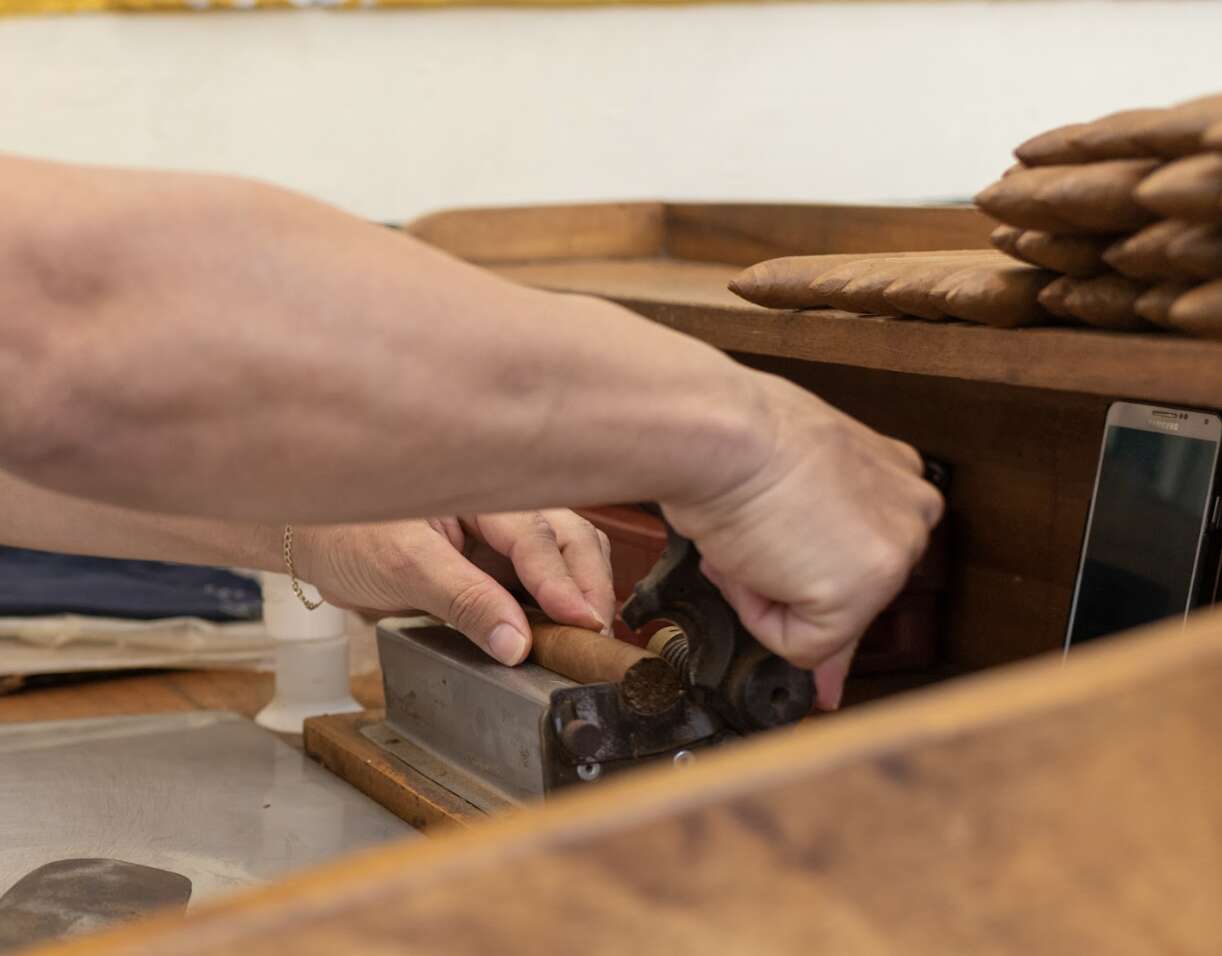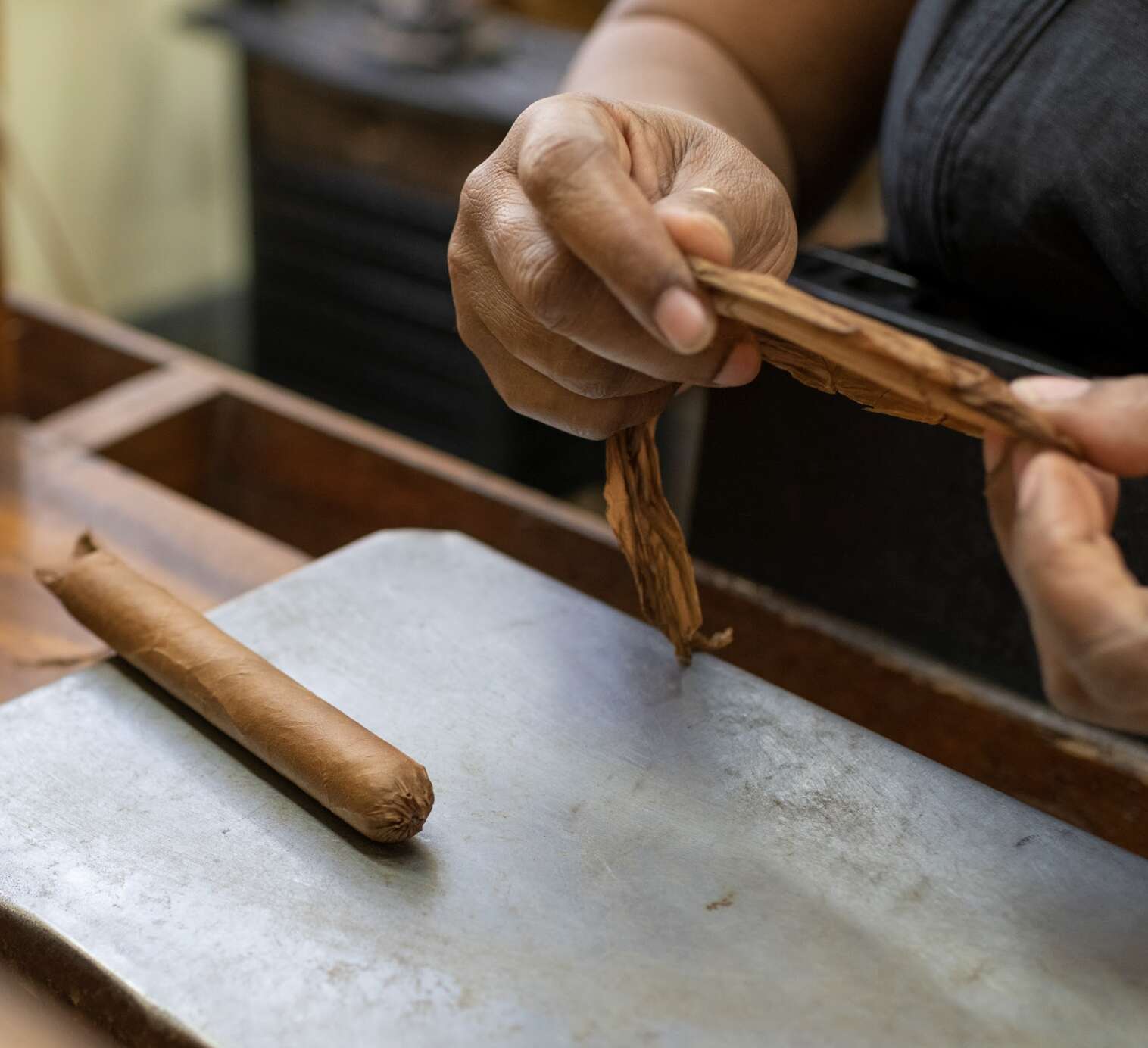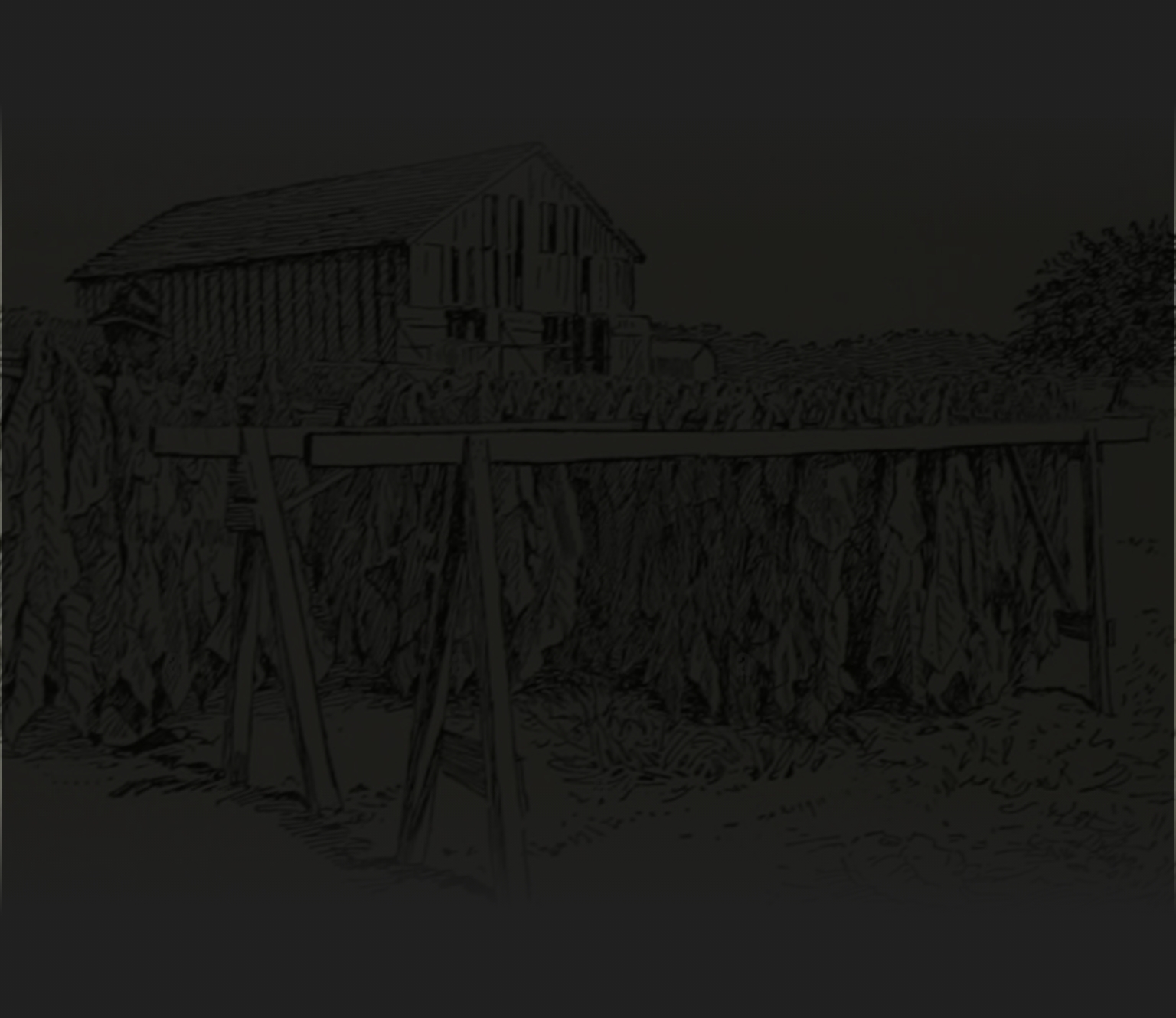The process
GROWING AND PRODUCTION.
How it is done
MANUFACTURING PROCESS
01.
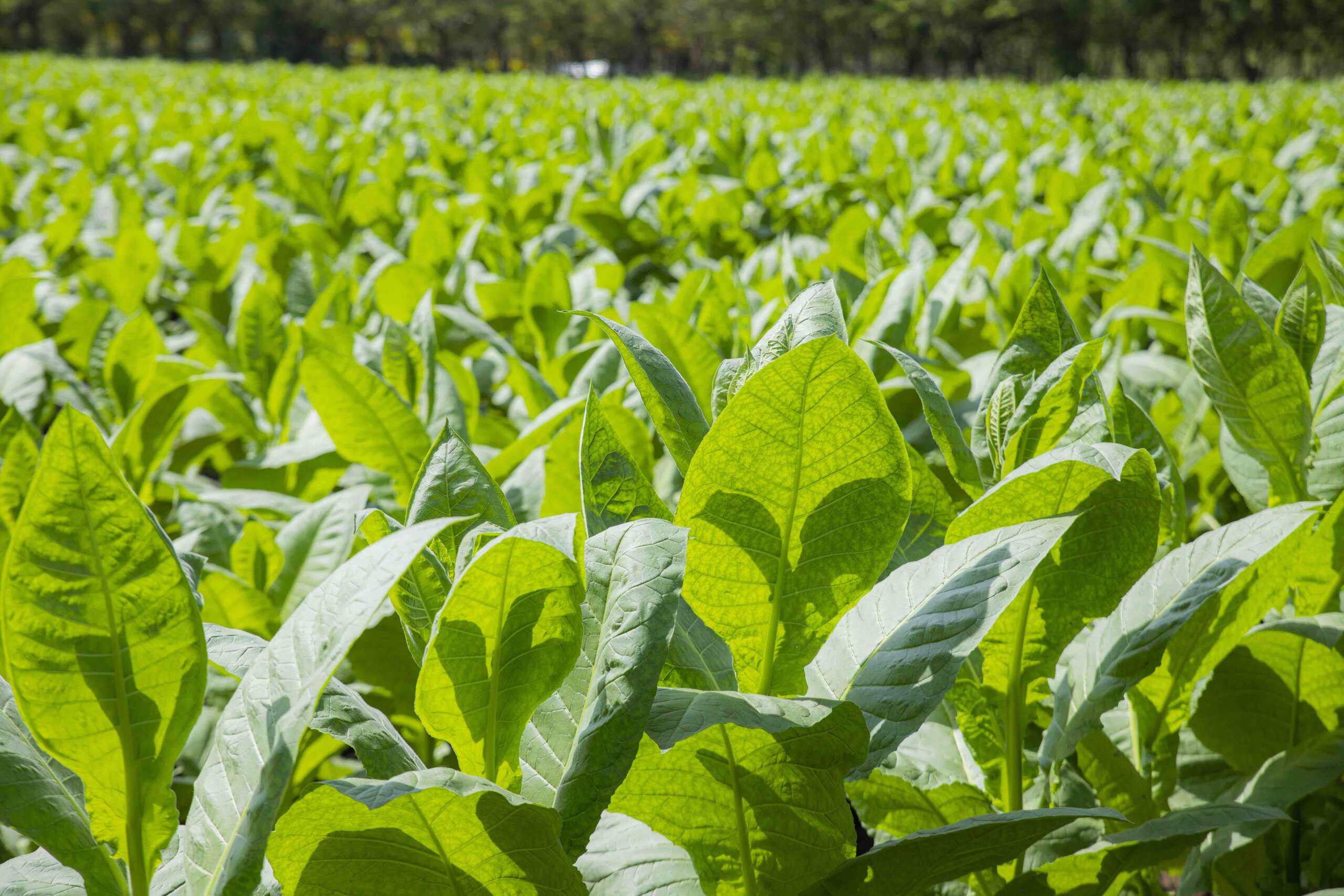
01
GROWING.
Tobacco seeds are planted in June and July in a sterilised growing medium that has temperature and humidity control to ensure plant quality. The leaves are harvested and taken to the tobacco houses after six months of maturation.
01.

01
GROWING.
Tobacco seeds are planted in June and July in a sterilised growing medium that has temperature and humidity control to ensure plant quality. The leaves are harvested and taken to the tobacco houses after six months of maturation.
02.
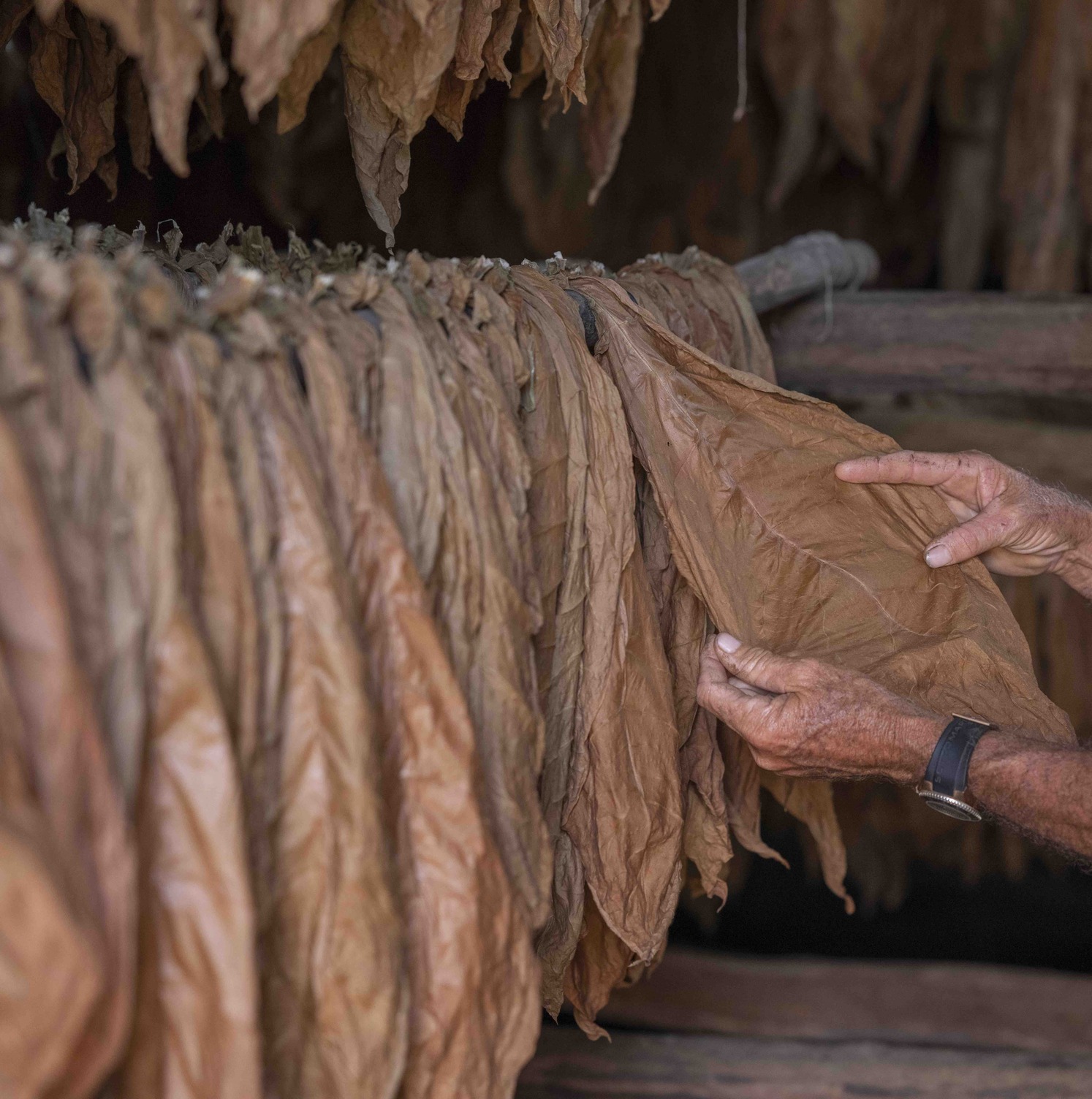
02
PREPARING THE LEAVES.
The master blender indicates which leaves are needed and in what proportion to make each brand of cigars once the leaves have been sorted by size, colour and texture.
02.

02
PREPARING THE LEAVES.
The master blender indicates which leaves are needed and in what proportion to make each brand of cigars once the leaves have been sorted by size, colour and texture.
03.
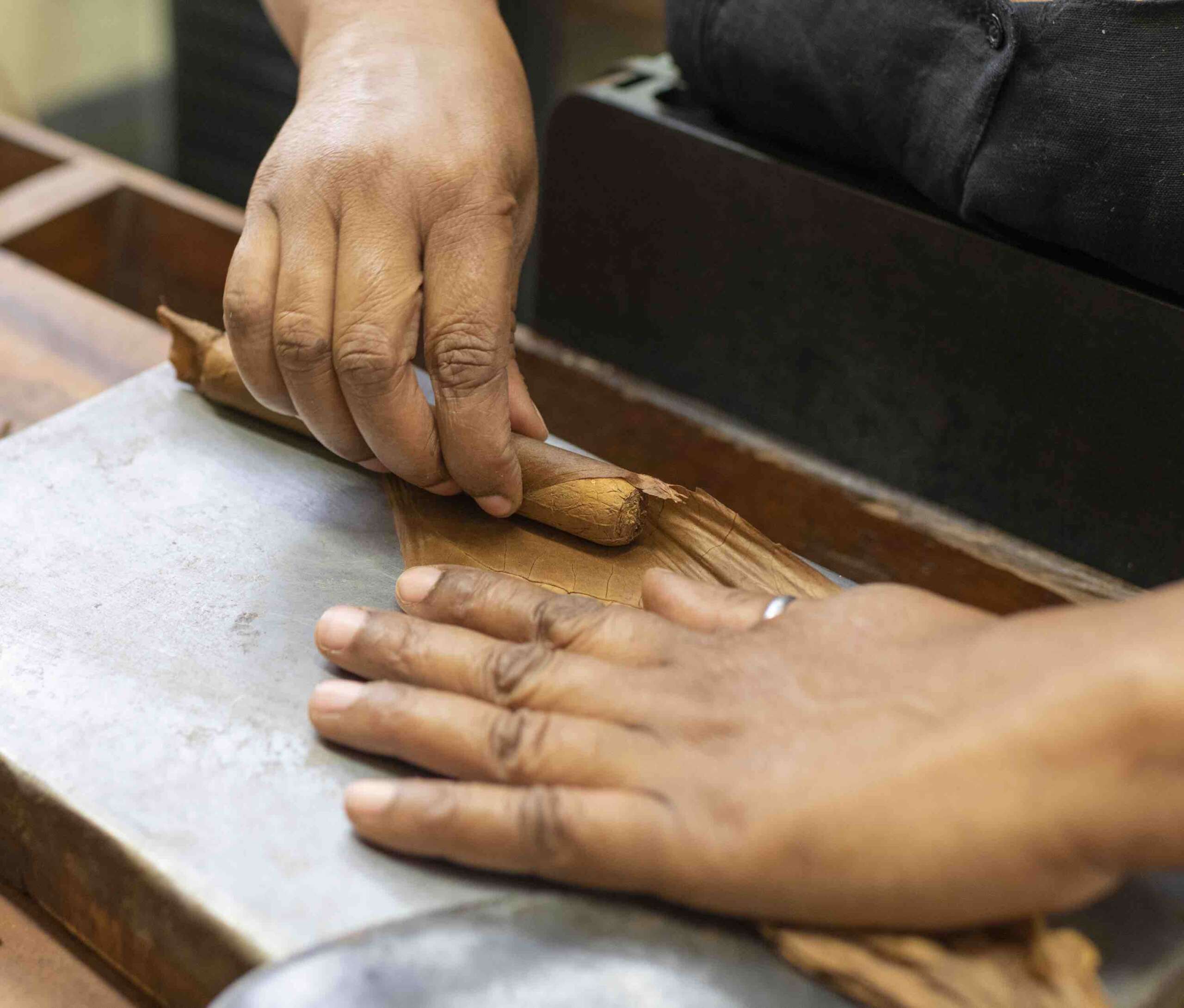
03
ROLLING.
The cigar rollers, or torcedores, gather together the filler leaves and roll these with the binder leaves. This process can be performed handmade or machinemade.
03.

03
ROLLING.
The cigar rollers, or torcedores, gather together the filler leaves and roll these with the binder leaves. This process can be performed handmade or machinemade.
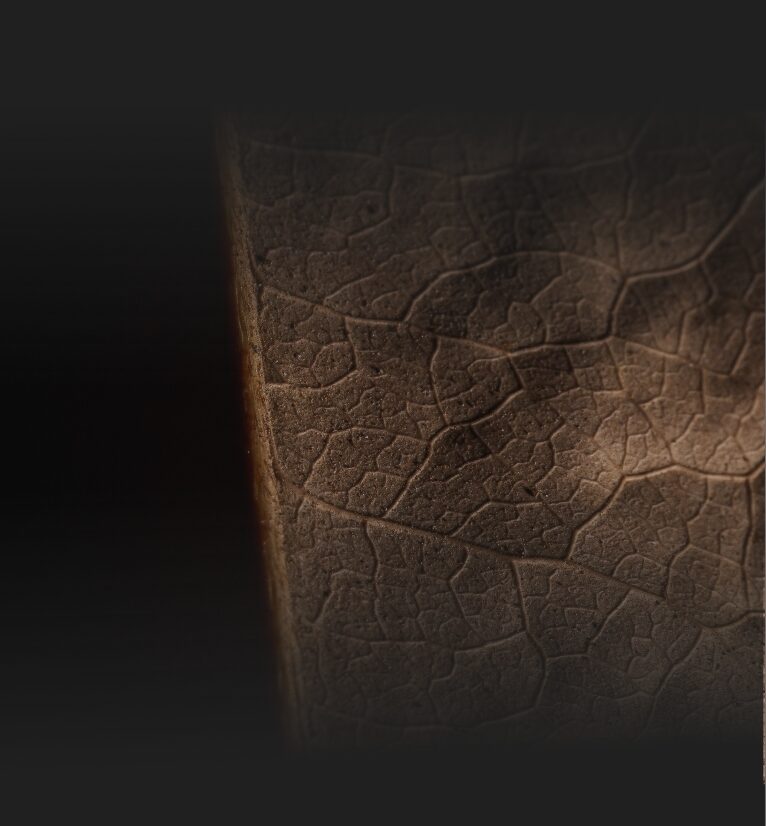
Step 1
GROWING
Tobacco seeds are planted in June and July in a sterilised growing medium that has temperature and humidity control to ensure plant quality. The leaves are harvested and taken to the tobacco houses after six months of maturation.
SOWING
Work begins during the hot months of June and July and continues for a further nine months. Different fields are planted at various times in order to spread the workload over each season.
The period between sowing and the end of harvesting is:
17 weeks
for plants grown in the shade
16 weeks
or plants grown in full sunlight
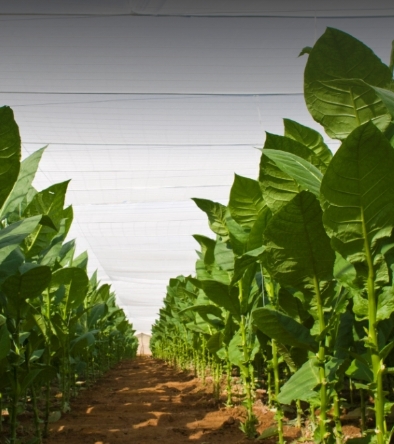
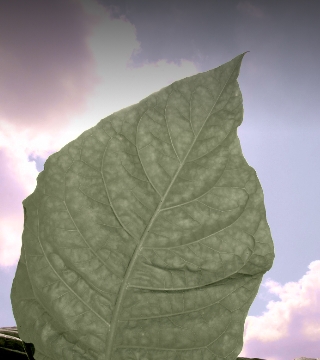
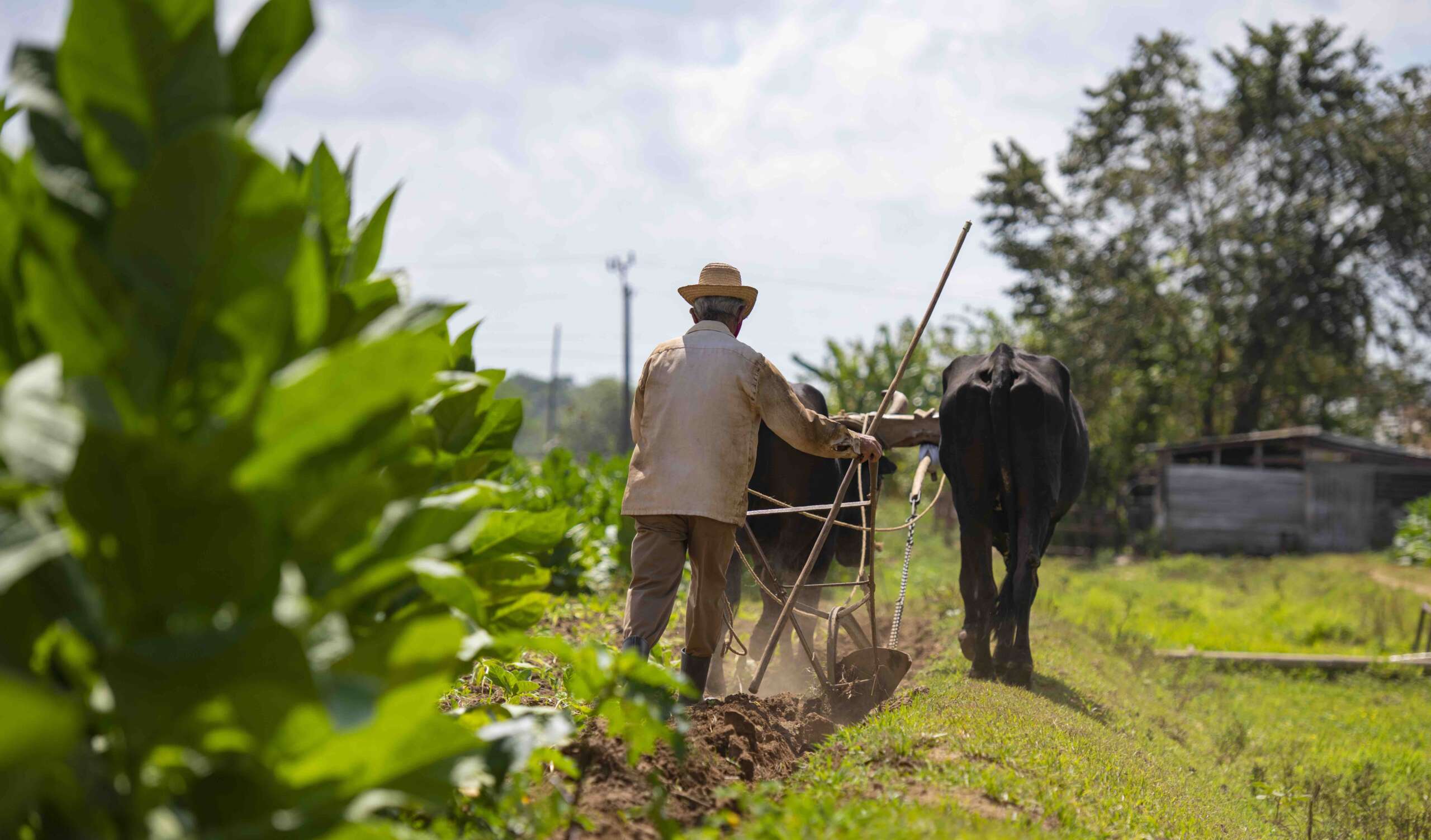
PLOUGHING
Tobacco plants grow in the loosest possible soil, so it is necessary to plough the fields carefully in a specific pattern at a certain depth several times before sowing.
Animal traction is still used to avoid soil compaction.
TRANSPLATING
Seedlings are grown in special seedbeds with a straw cover for protection. Some are nowadays produced by a new method in floating seedbeds positioned in tunnels that serve to protect them.
The seedlings in the seedbed reach a height of 13 to 15 cm after 45 days and are ready to be transplanted
Soil is mounded around the base of the plant to promote the development of strong roots between 18 and 20 days after transplanting.
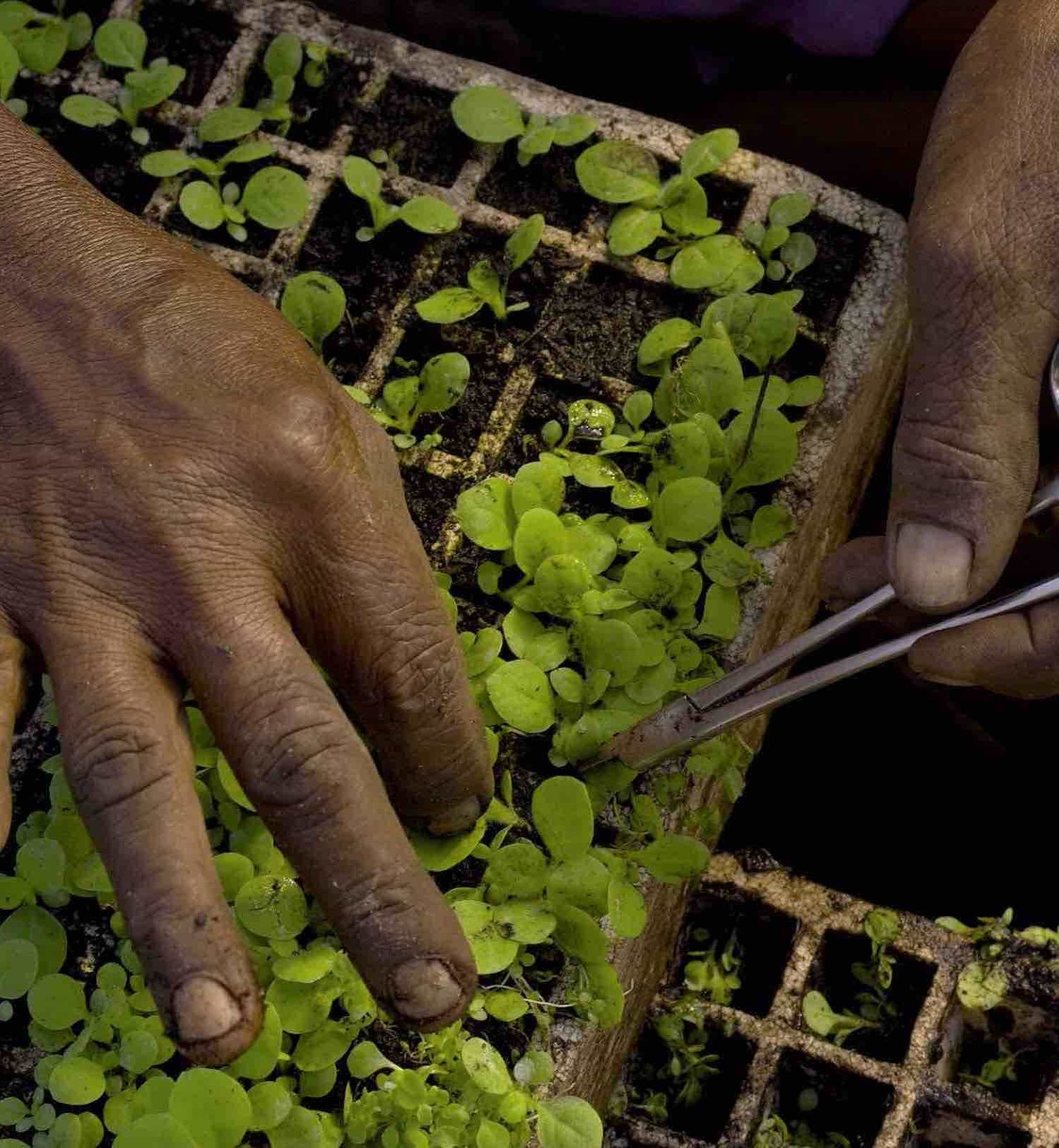
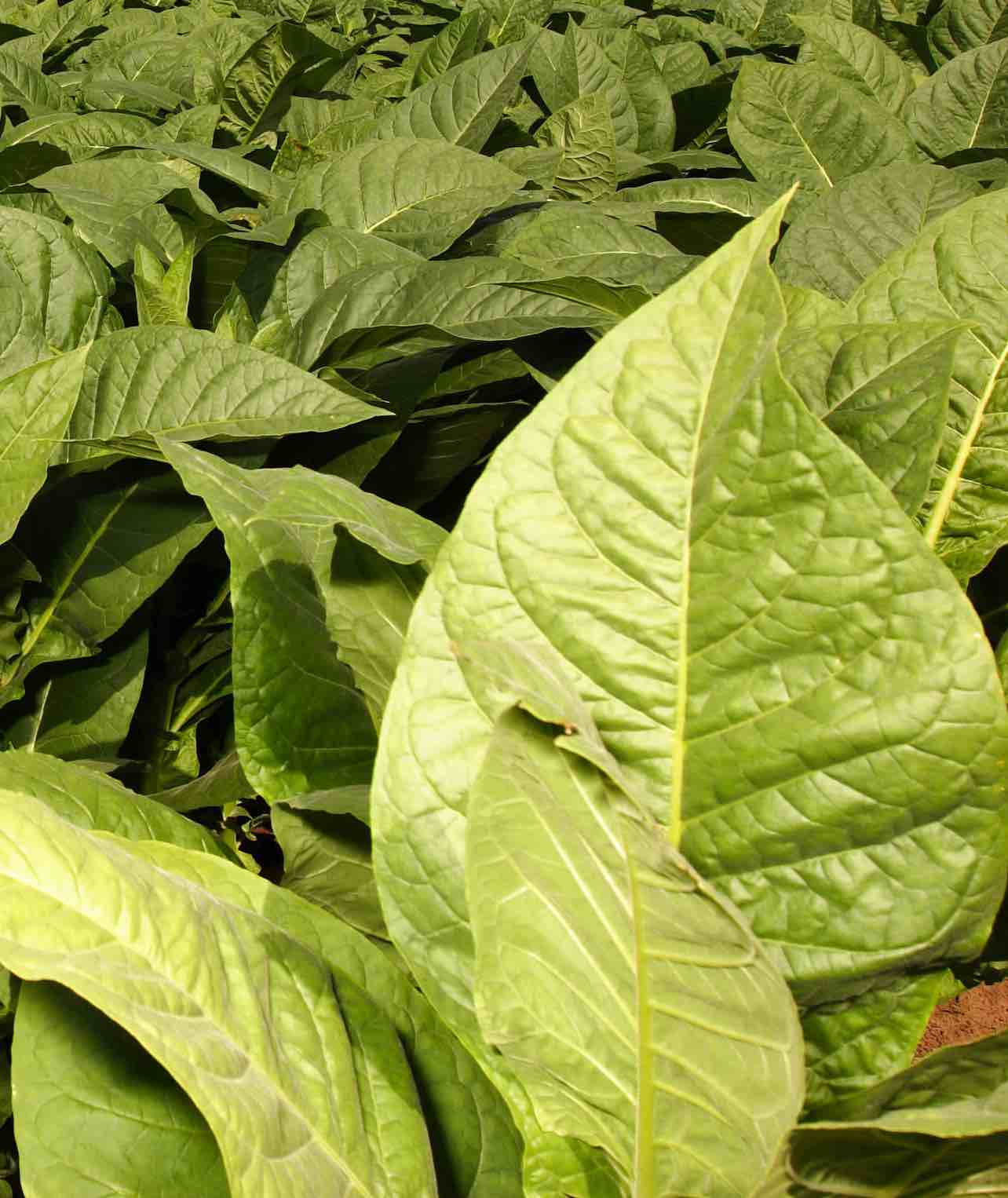
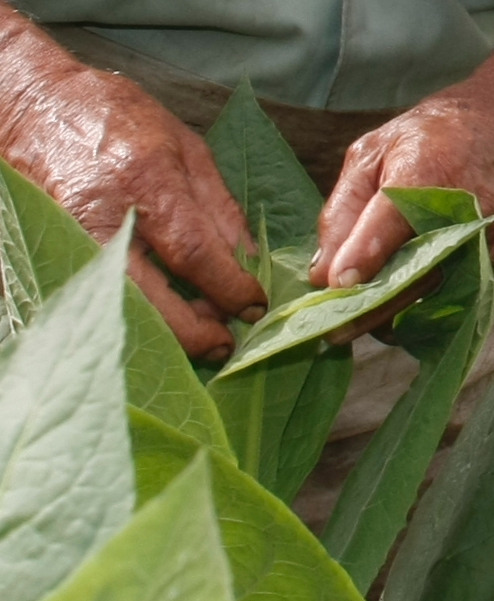
DISBUDDING
As each plant reaches the desired height, the top bud is removed to concentrate strength on the development of larger leaves. This is known as disbudding.
The action of disbudding triggers the accelerated regrowth of shoots (offspring). The farmer must make repeated visits to each plant to remove these shoots, a procedure known as defoliation.
HARVESTING
Harvesting can begin around 40 days after transplanting. It is an arduous task because each leaf must be harvested by hand.
Only two or three leaves can be taken at a time, and a few days must elapse between harvests. It takes about 30 days to harvest a single plant in its entirety.
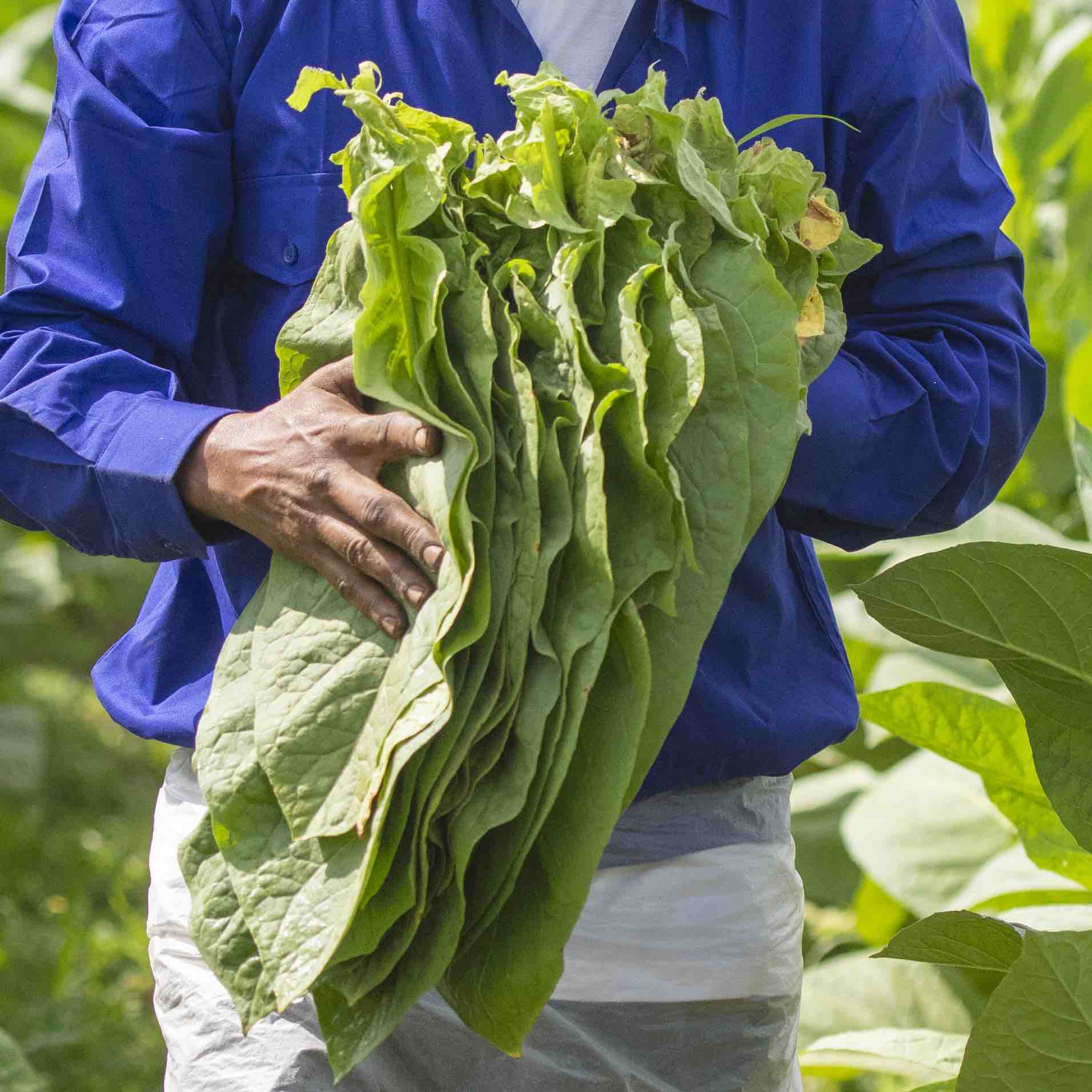
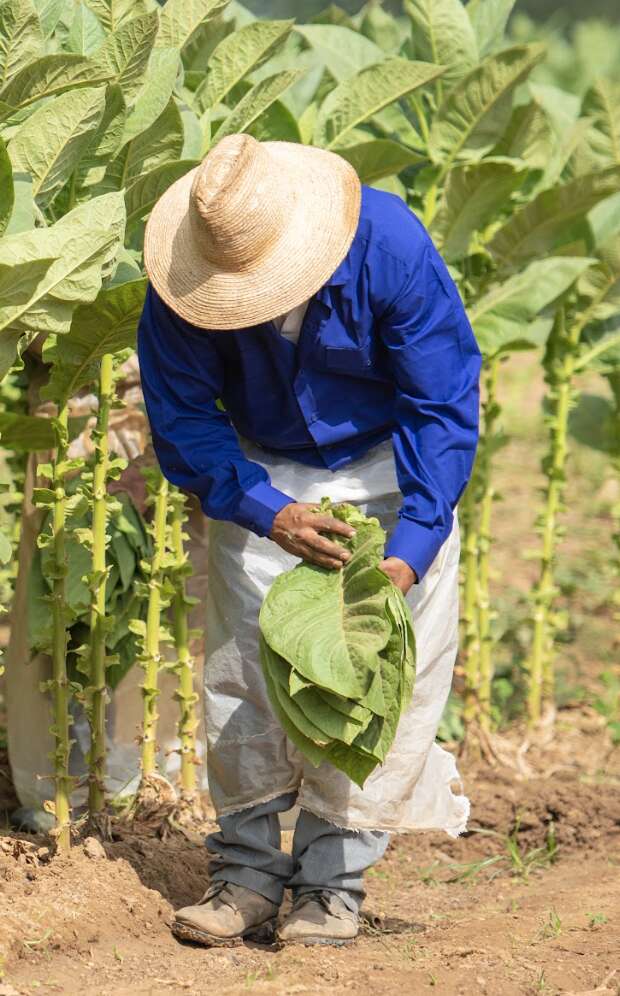
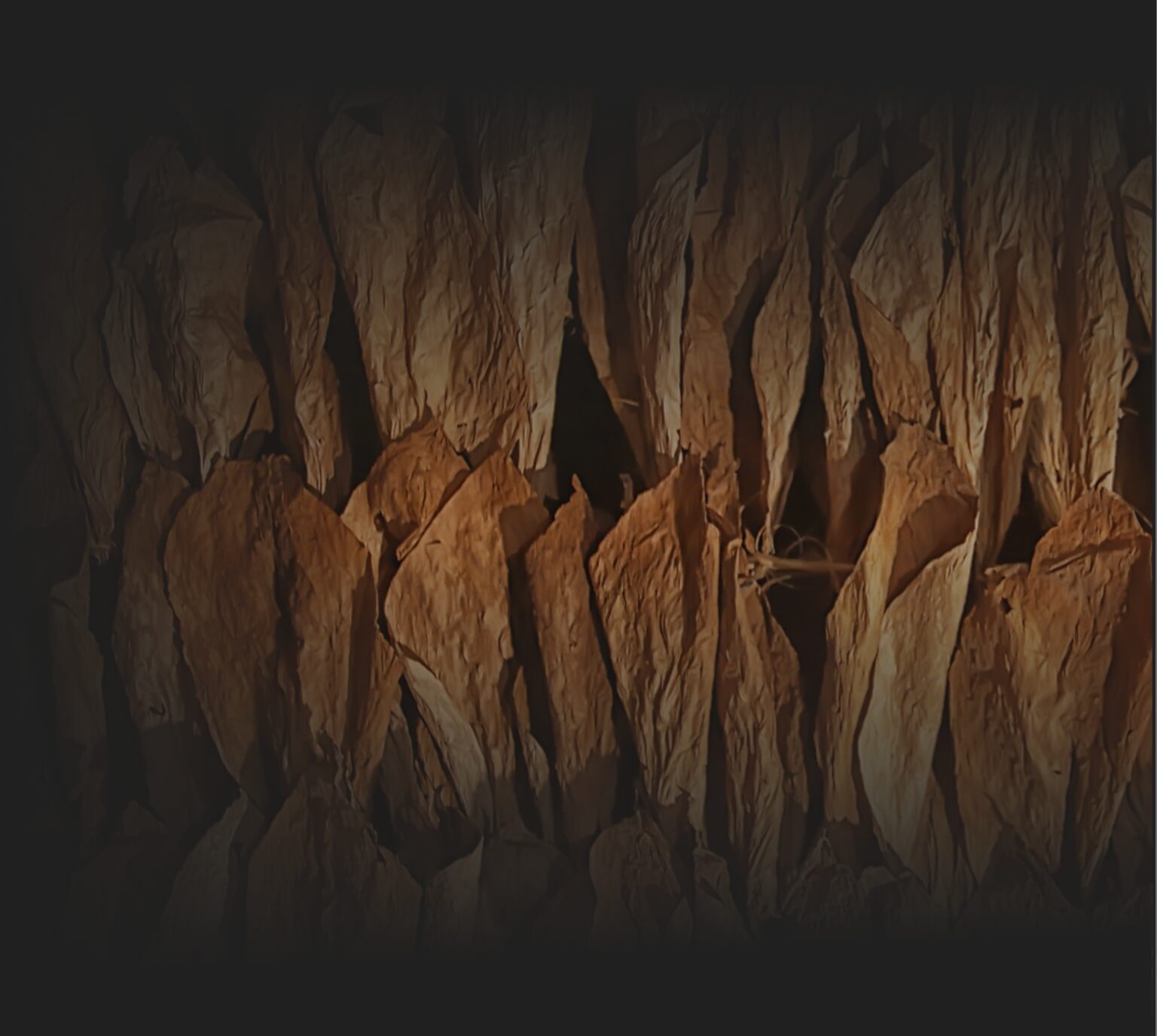
Step 2
PREPARING THE LEAVES
The master blender indicates which leaves are needed and in what proportion to make each brand of cigars once the leaves have been sorted by size, colour and texture.
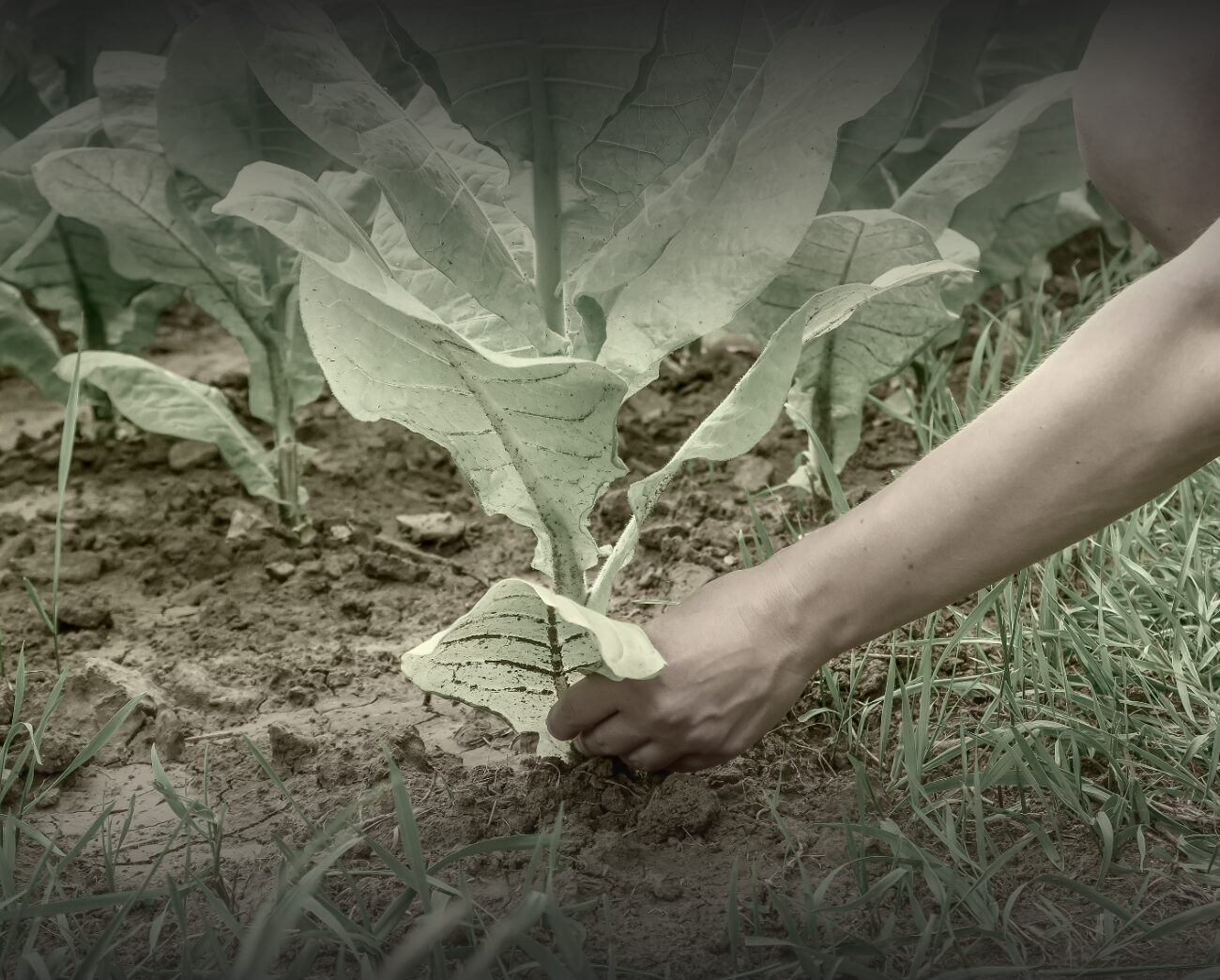
CURING
The first process a freshly harvested leaf is subjected to is a slow, careful air-curing period to remove moisture and help the leaf to gradually obtain a golden brown tone. The entire harvest depends on the success of this process
AIR CURING BASED ON TRADITIONAL METHODS
Most leaves are cured in traditional tobacco barns that rely entirely on natural weather effects. The leaves are strung – or threaded together – in pairs and hung side by side on poles, or cujes, resting on racks.
The poles are progressively raised towards the top of the tobacco barn as the leaves cure.
Ventilation and light must be constantly adjusted to allow for natural variations in temperature and humidity.
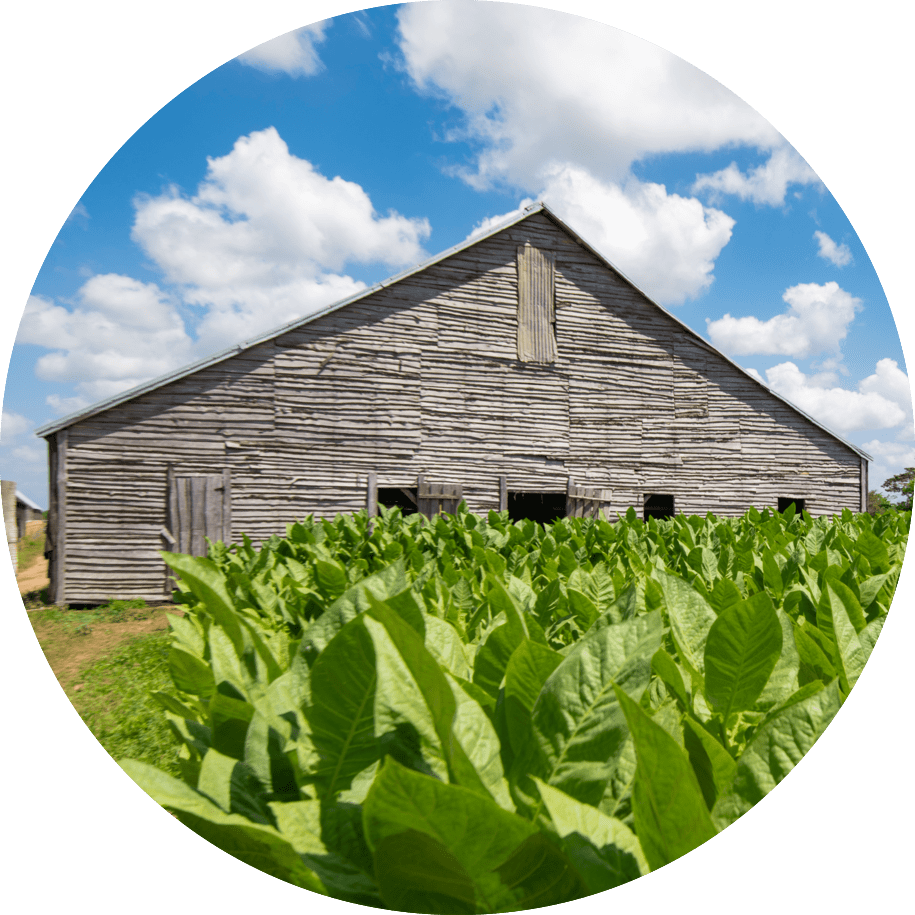
CONTROLLED AIR CURING FOR WRAPPER LEAVES
Major investment was made in the 1990s in temperature and humidity control resources to cure precious wrapper leaves in order to overcome the unpredictable variations in a conventional tobacco barn. Air curing is performed by using a highly refined method that involves optimal conditions at all times, and, of course, less time is required.
But there is still the need to constantly monitor and adjust the conditions as the state of the leaves changes, given that this process occurs continuously over a 24-hour period
The farmer’s work concludes once the leaves have been cured and the task now passes into the hands of the Empresa de Acopio y Beneficio del Tabaco (Tobacco Collection and Processing Company), which is the entity that buys the tobacco from the farmer. Separated by cutting, the dried leaves are now ready to be taken to the sorting house to undergo the first stage of fermentation.
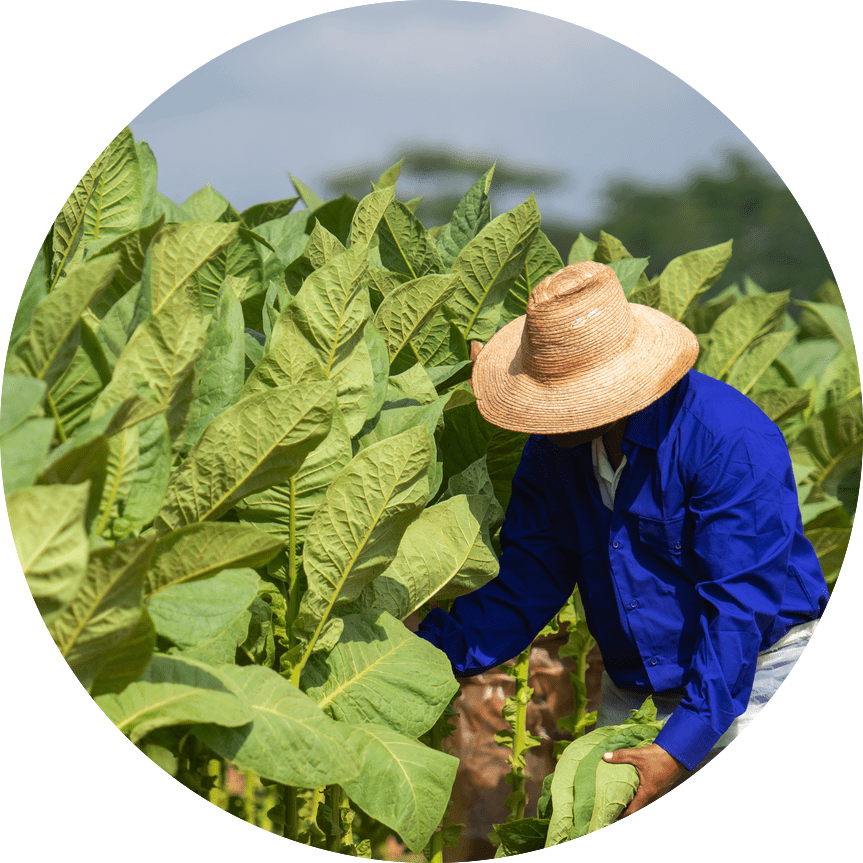
FIRST FERMENTATION
The dried leaves are tied into bundles called gavillas (sheaves) and these are taken from the vega to the sorting house. There, they are placed in piles covered with yagua bark or cloth to undergo a completely natural fermentation process that is triggered by the moisture contained in the leaves.
Fermentation is vital for the quality of cigar smoking. It is here that the leaf eliminates impurities and reduces acidity, tar and nicotine. It also softens the flavour of filler leaves and evens out the colour of wrapper leaves
The leaves that grow on the upper part of the plant require a longer fermentation period because they are thicker and richer in oils.
The fermentation process is exactly the same as that which occurs in a compost pile in the garden. Moisture and compression combine to generate heat. Constant monitoring is therefore required to ensure that the process remains within the desired parameters.
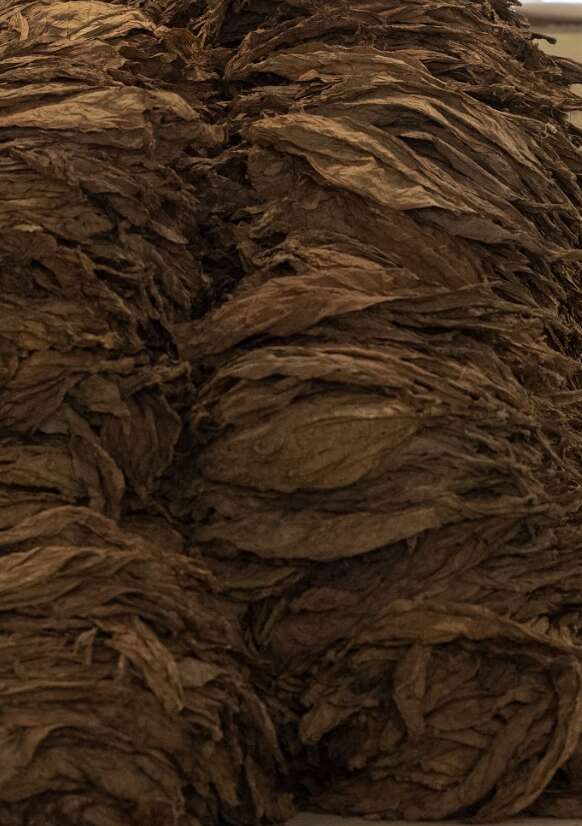
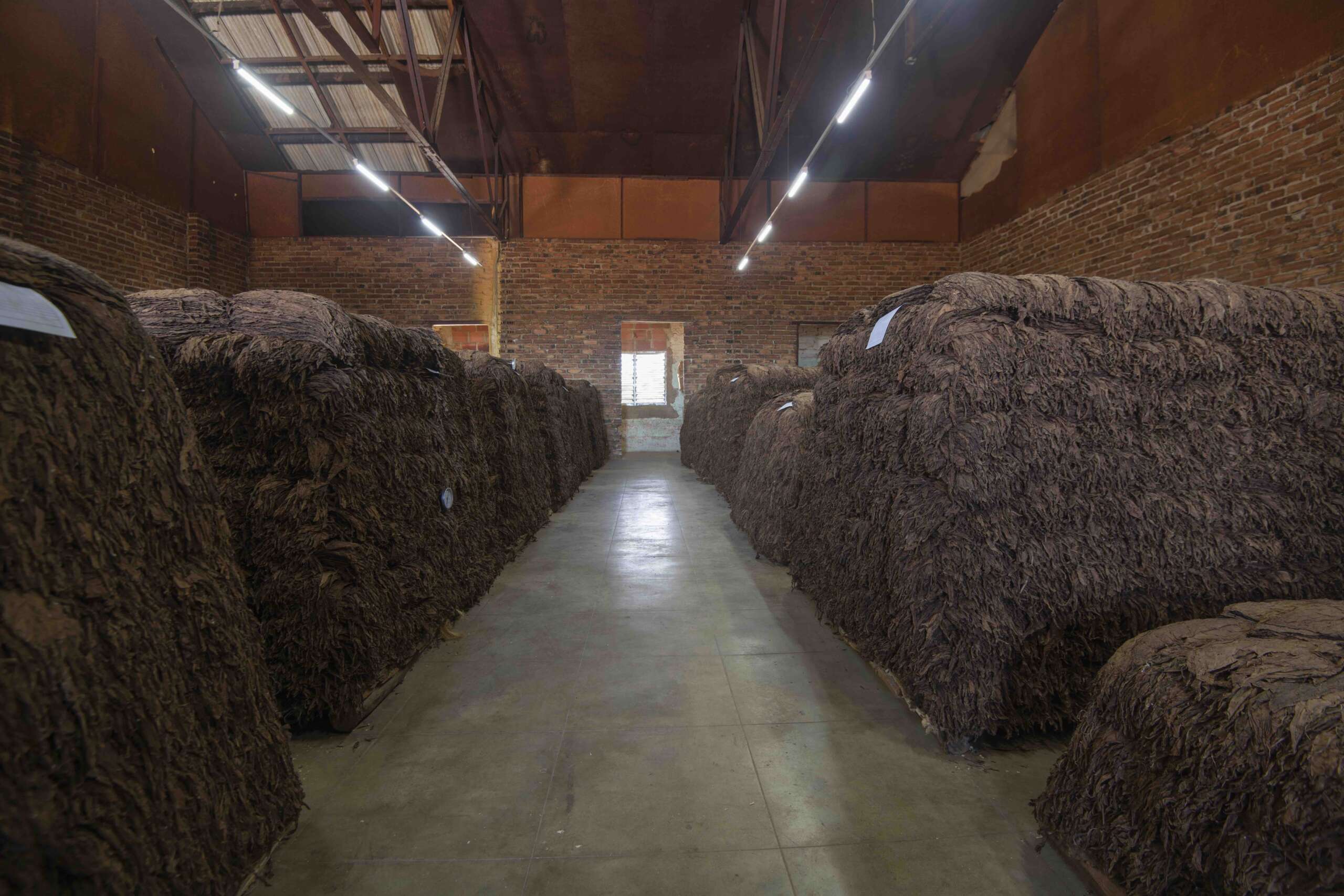
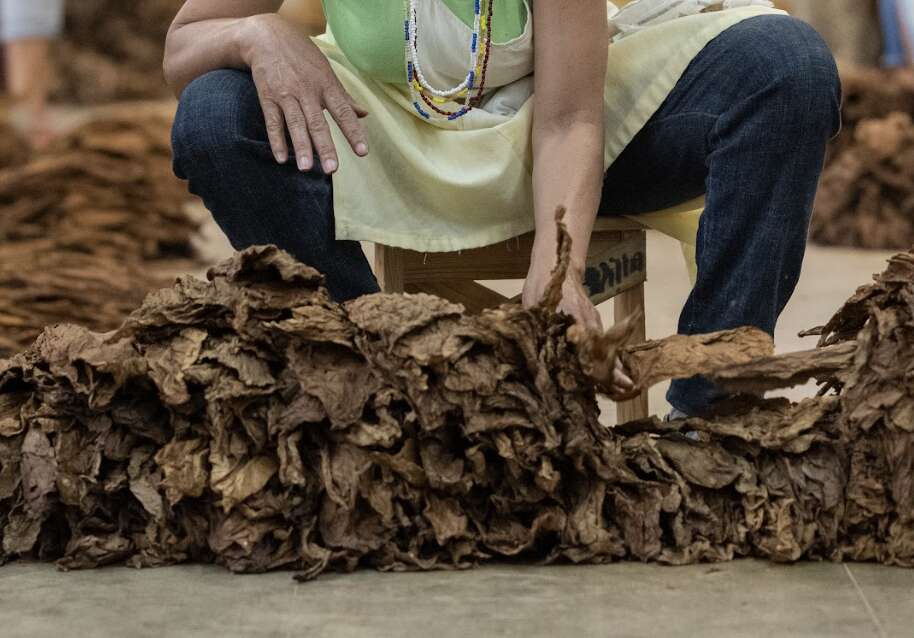
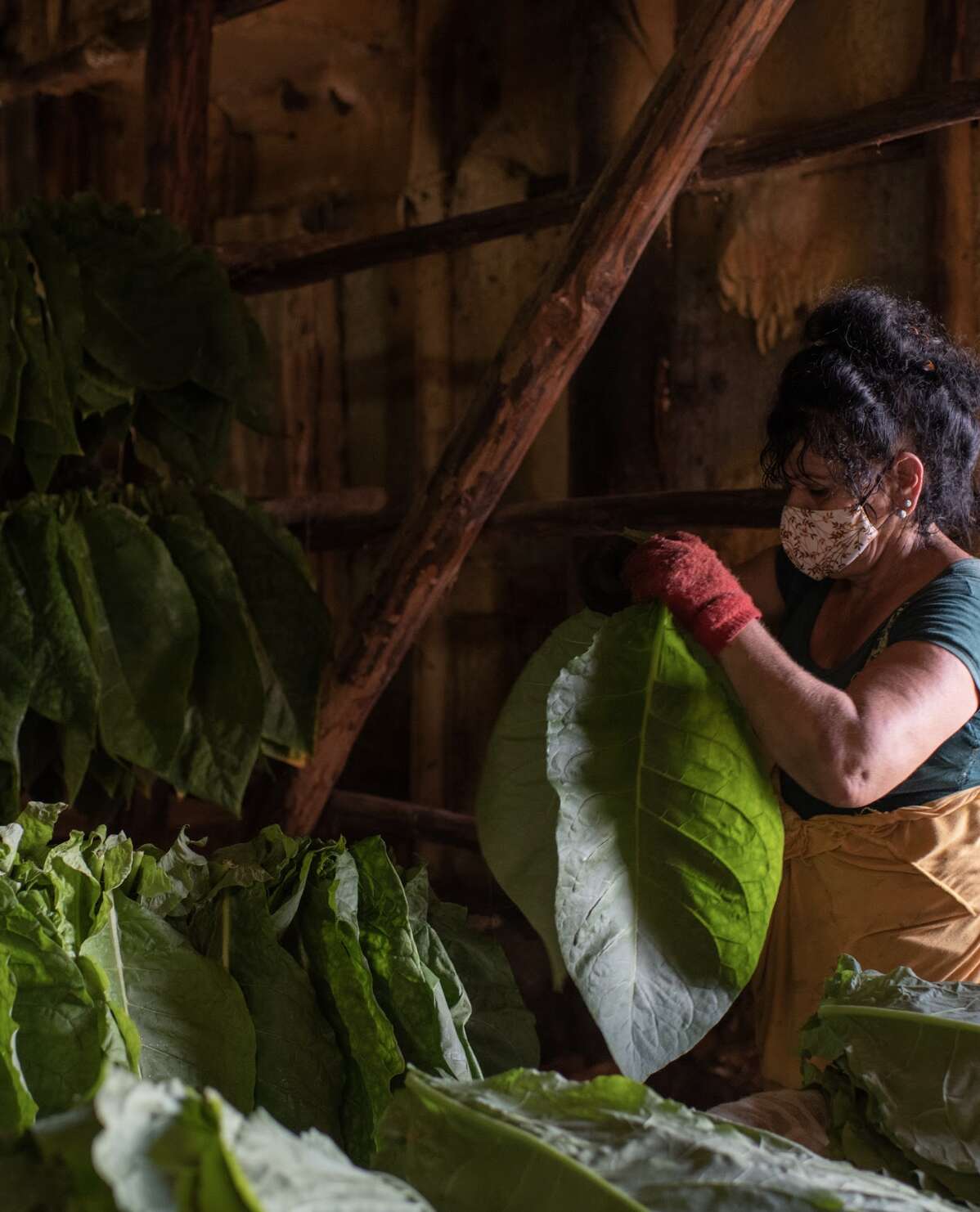
SORTING AND SELECTION
It is now time to select the leaves according to the role they will ultimately play in the process of making a Habano.
Size, colour and texture are the three criteria by which the members of each selection are judged.
01
WRAPPER LEAVES
These are predictably given careful attention. They are first moistened and air-cured to prepare them for handling.
They are then sorted into more than 50 different categories designed to ensure that only the most ideal leaves are used to wrap a Habano.
Any leaves that fall below the required quality standards are rejected and set aside for other uses.
02
FILLER AND BINDER LEAVES
These are chosen and grouped into three sizes and three essential categories of flavour or time that are mixed to obtain the ligada, or blend, of the filler: ligero, seco and volado.
As with wrapper leaves, some filler and binder leaves are discarded at this stage and are used to make non-Habano cigars and cigarettes. Once sorting has been completed and the leaves are left to rest, the wrapper leaves, which only require one fermentation because they are thinner, are ready to be packed in bales known as tercios and transported to the warehouse, where they will be left to age like the best wines.
DESTEMMING
The sorted (selected) filler and binder leaves are now transferred to the destemmer, where a wetting process, or moja, is first performed to allow the leaf to be destemmed. The moja also provides the necessary humidity for the second fermentation to begin.
The sure fingers of the destemmers tear the lower part of the central vein of each filler or binder leaf. At the same time, they carry out the final selection according to size and characteristics at each stage. Once again, any leaf that fails to meet the set standards is rejected. The leaves are finally grouped and ironed between boards.
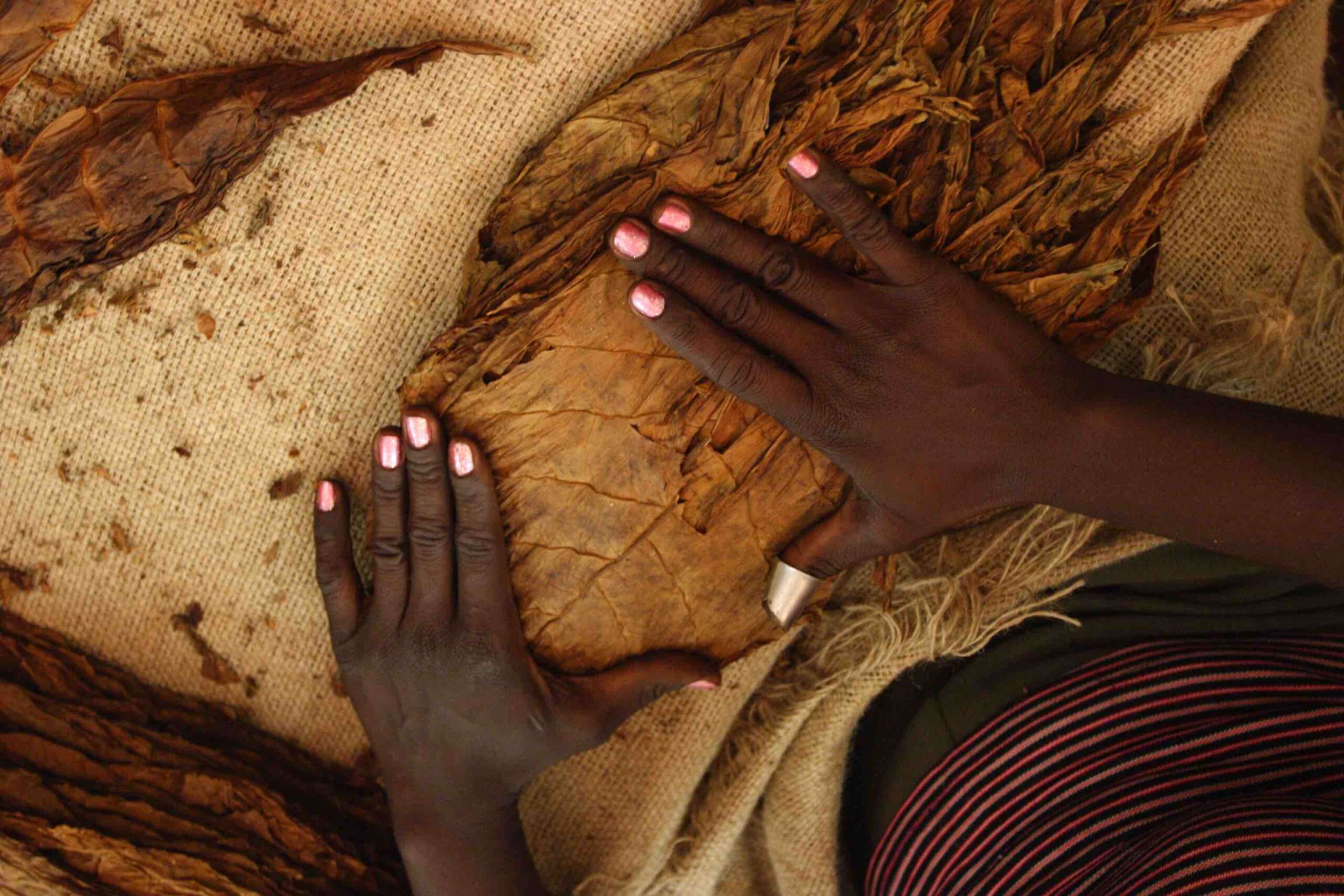
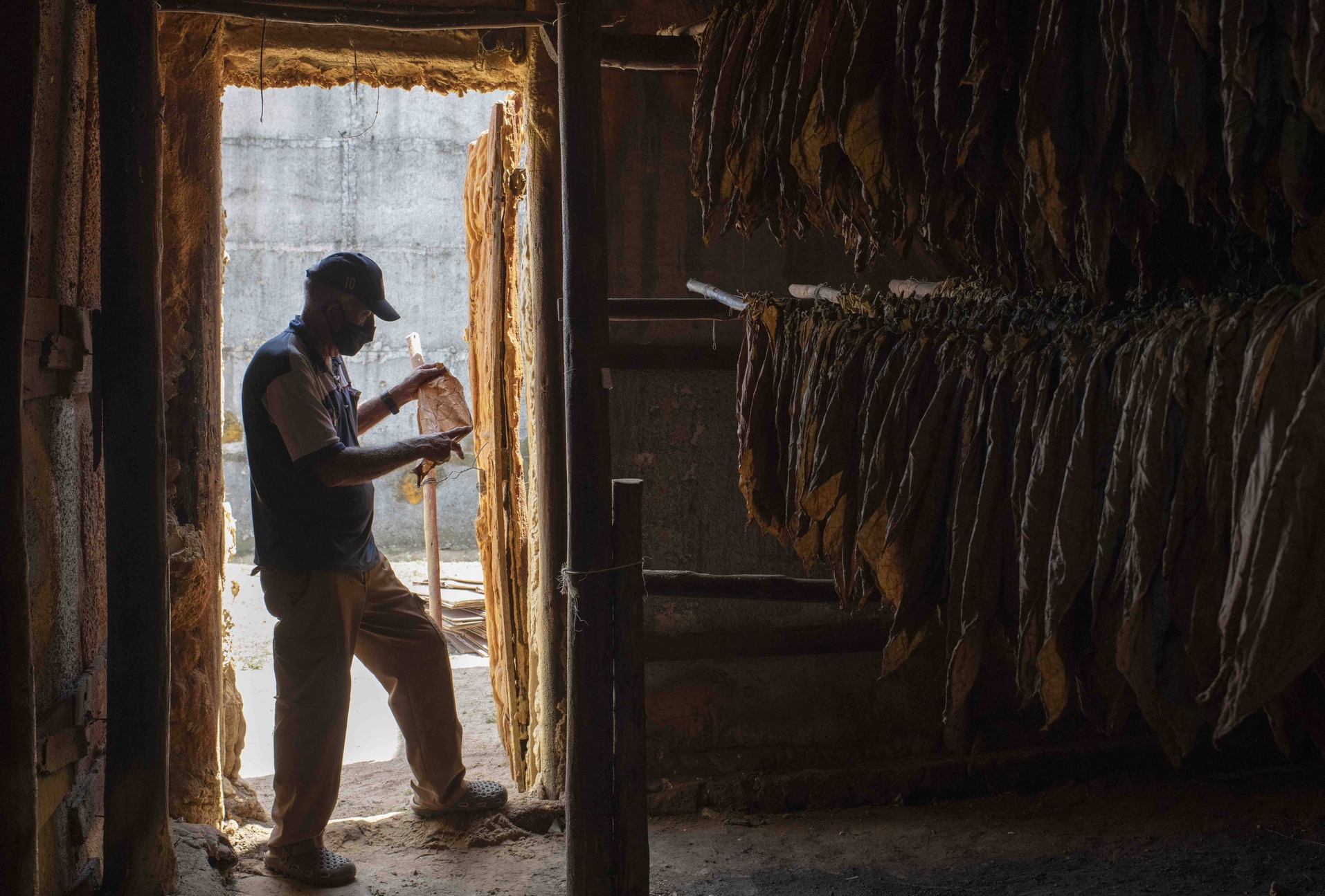

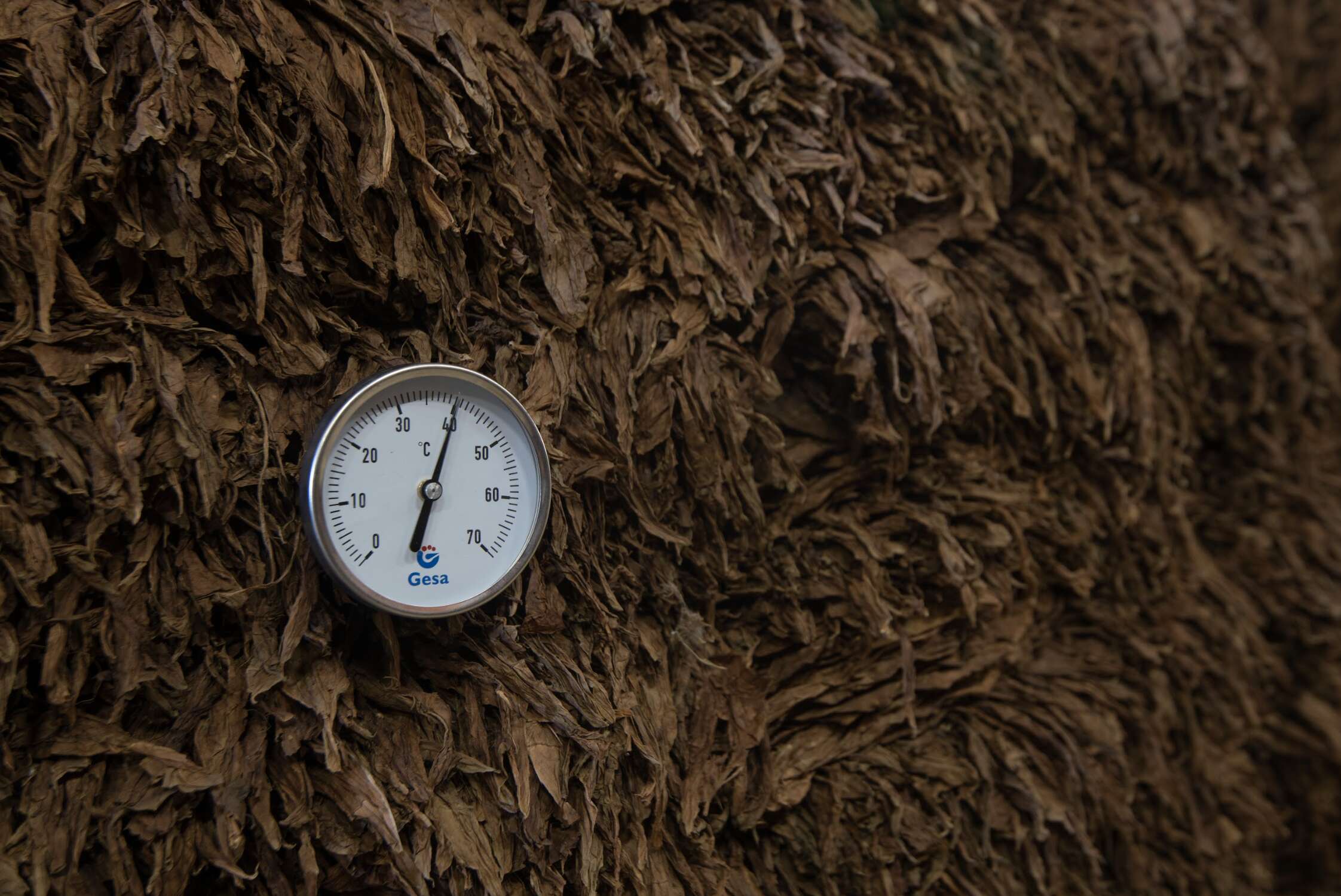
SECOND FERMENTATION
At this point, the leaves to be used for filler and binder undergo a second fermentation during which the piles are much bigger and the duration is longer than in the first fermentation.
Once again, the thicker, greater strength or flavour leaves undergo a longer fermentation process. The process is shorter for the thinner, lower strength leaves.
The fermentation temperature must be monitored very carefully. When it becomes too high, the piles must be broken up to allow the leaves to cool, and they are then rearranged, reversing the order of the leaves (leaves at the bottom are placed on top, and vice versa). This procedure may be repeated several times during this second fermentation.
AGEING
After the second fermentation, the leaves grown in full sunlight for filler and binder are aired on pallets known as parrilleros for several days. They are then packed and transported to the warehouse, where they will be joined with the wrapper leaves to complete the patient final ageing process.
The more intense ligero leaves are subjected to a longer ageing period. Leaves with lower strength are aged for a shorter time. Like any good wine, the longer a leaf is allowed to mature, the higher its quality.
The more intense ligero leaves are subjected to a longer ageing period. Leaves with lower strength are aged for a shorter time. Like any good wine, the longer a leaf is allowed to mature, the higher its quality. The filler and binder leaves are packed in bales known as pacas, while the wrapper leaves are packed in bales called tercios, made from yagua, which is the bark of the royal palm, a multi-purpose material in Cuba.
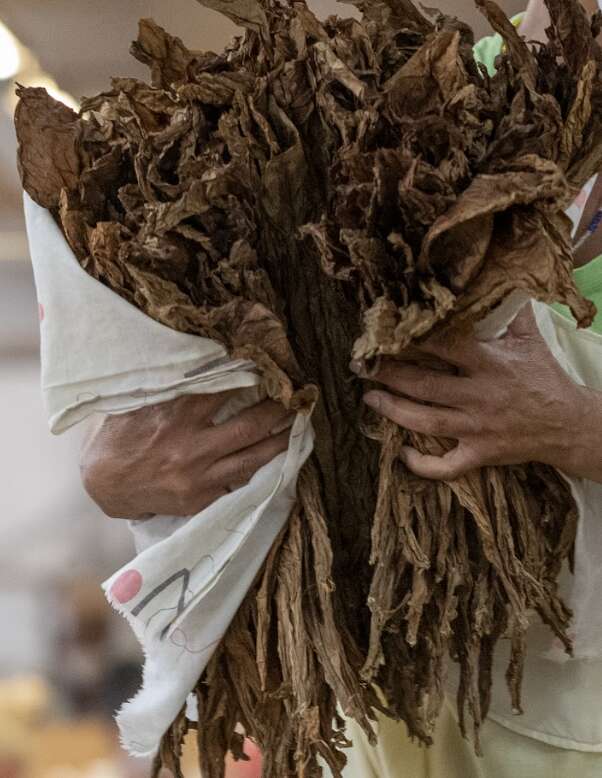
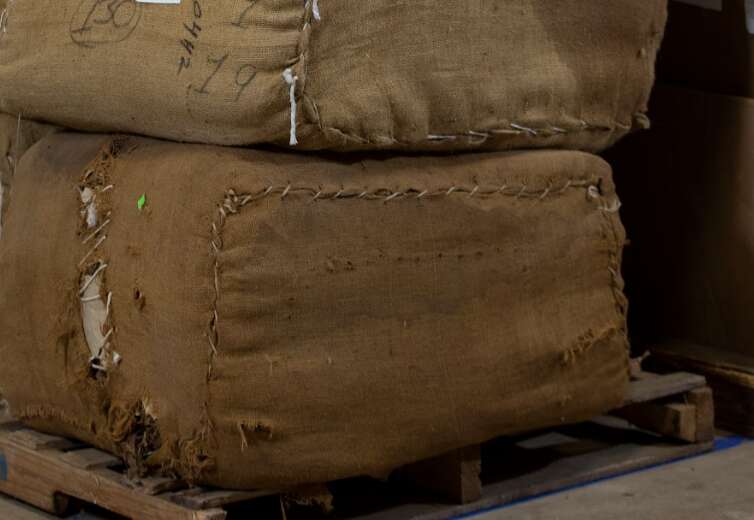
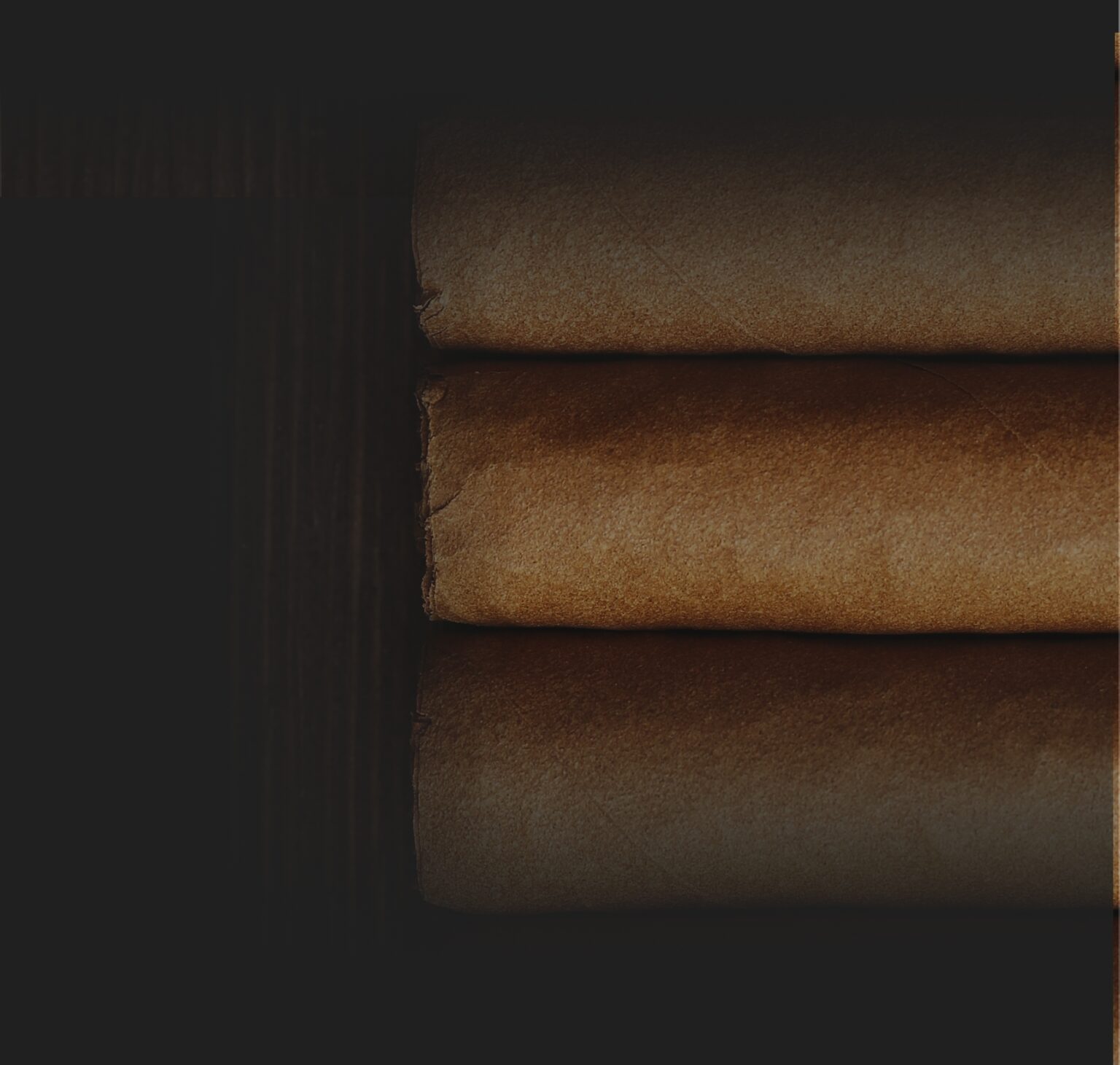
Step 3
ROLLING
Rolling is a key step in the making of premium cigars. The cigar rollers, or torcedores, gather together the filler leaves and roll these with the binder leaves.
Entirely handmade rolled
LONG FILLER.
CIGAR ROLLERS USE FEW TOOLS
Wooden board
2 cutters
(a chaveta and a small casquillo)
Guillotine
Pot of colourless, tasteless natural vegetable gum
Template
(to check length and gauge of the cigar)
But their most important tool is the dexterity of their hands.
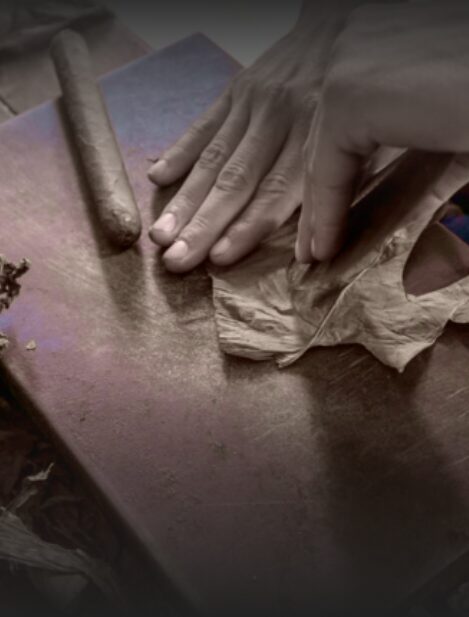
There are four categories of cigar rollersand only the highest is allowed to make the biggest, most complex Habanos, a specialisation that requires years of experience.
Curious facts
The vast majority of cigar rollers today are women, i.e. torcedoras.
It is a tradition that a reader accompanies cigar rollers as they work, either by reading a newspaper or novels chosen by popular choice.
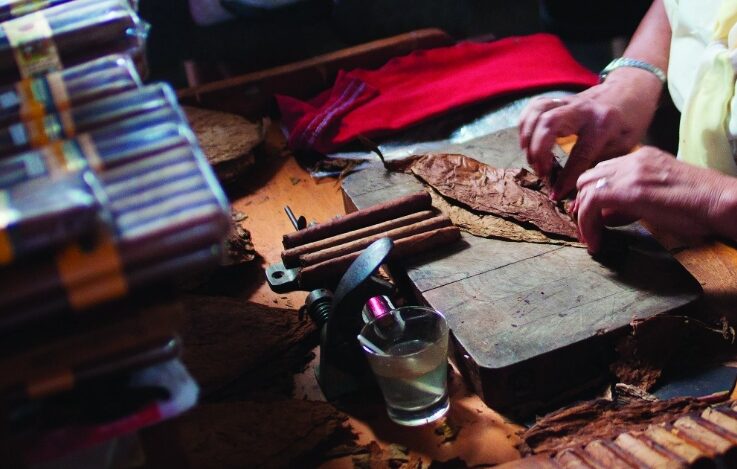
CIGAR ROLLERS USE FEW TOOLS
Wooden board
2 cutters
(a chaveta and a small casquillo)
Guillotine
Pot of colourless, tasteless natural vegetable gum
Template
(to check length and gauge of the cigar)

But their most important tool is the dexterity of their hands.
There are four categories of cigar rollersand only the highest is allowed to make the biggest, most complex Habanos, a specialisation that requires years of experience.

Curious facts
The vast majority of cigar rollers today are women, i.e. torcedoras.
It is a tradition that a reader accompanies cigar rollers as they work, either by reading a newspaper or novels chosen by popular choice.
Entirely handmade rolled
SHORT FILLER.
The trimmings from the cylindrical bunches of long filler cigars are combined with other selected types of tobacco and cut into pieces to create the blends of short filler cigars.
The cigar rollers wrap the filler into the binder leaf with the help of a flexible cloth that is attached to their bench to form a firm cylindrical bunch.
The wrapper leaf is positioned by hand in a traditional manner.
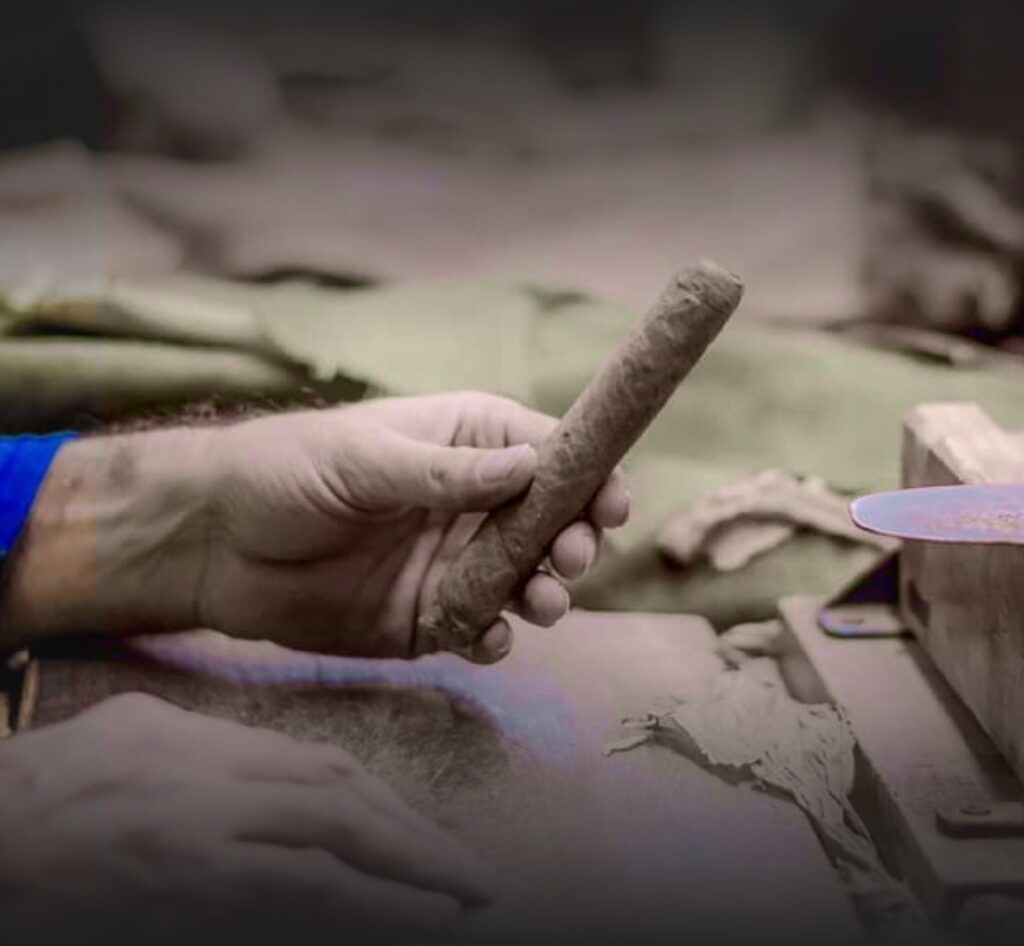
The trimmings from the cylindrical bunches of long filler cigars are combined with other selected types of tobacco and cut into pieces to create the blends of short filler cigars.
The cigar rollers wrap the filler into the binder leaf with the help of a flexible cloth that is attached to their bench to form a firm cylindrical bunch.
The wrapper leaf is positioned by hand in a traditional manner.

Rolling
MACHINEMADE.

Machines have been used to make premium cigars since the 1950s.
These can make both long filler and short filler Habanos, but only in small vitolas.
All the tobacco used comes from Vegas Finas de Primera, in the Vuelta Abajo region.
Machines have been used to make premium cigars since the 1950s.
These can make both long filler and short filler Habanos, but only in small vitolas.
All the tobacco used comes from Vegas Finas de Primera, in the Vuelta Abajo region.

PREPARING SHORT FILLER AND SELECTING RAW MATERIAL
The process begins by preparing the filler and selecting and moistening the wrapper and binder.
Making the filler is an extremely important stage, for it will determine the aroma, flavour and final strength of the cigar. Each brand has a unique blend, which is why strict control of the proportions of the mix of different tobacco varieties is guaranteed so as not to alter their characteristics.
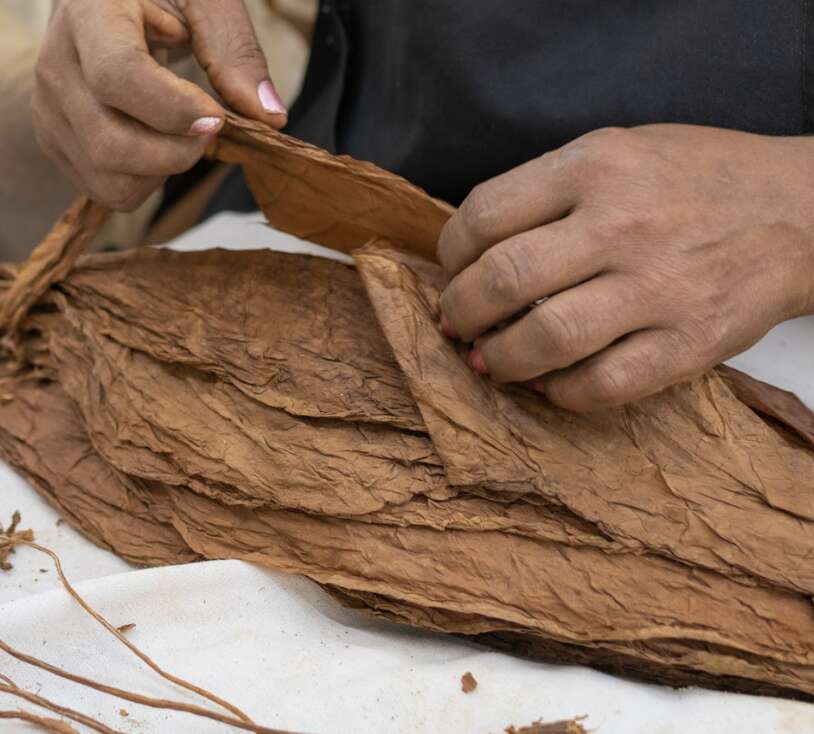
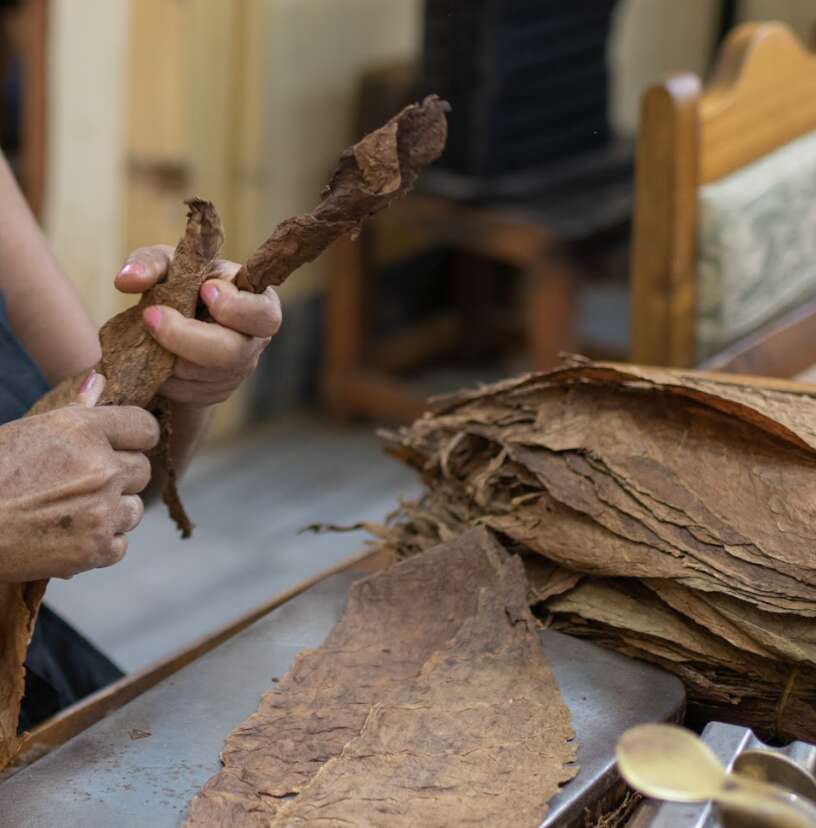
Step 01
After weighing the components of each blend, they are passed through a mixing cylinder fitted with sprinklers.
They can be moistened if they are too dry and are then left to rest for 24 hours after mixing.
Step 02
After this period of rest, the mixture is transferred to beaters where the leaf is fragmented, the veins are separated and the powder generated is extracted. The filler is thus obtained and left to rest for a period of 72 hours to unify humidity, which should range between 12-13%.
Step 03
The filler is wrapped with the binder leaf to form the cylindrical bunch, while the wrapper leaf will provide the final touch to the cigar, giving it a perfect texture.
Both parts are worked on in the wetting and preparation area: after the wrapper leaves are wetted and left to rest, they are ironed and sorted. The binder follows a similar process, although without sorting.
Step 04
Carboxymethyl cellulose, an organic material that does not stain the leaf or alter its properties, is used to join the binder and wrapper together.
MACHINEMADE CIGAR ROLLING
Once the raw materials are ready, the cigars are made in a machinemade rolling workshop to give them different formats.
The rolling process is carried out in two different ways:
TRADITIONAL SYSTEM
This uses a machine with a hopper for feeding the tobacco chop and two parts coupled together, one that places the binder to form the cylindrical bunch and the other that positions the wrapper.
This mechanized work of the machine requires two operators and a feeder. The machine has a bundling capacity of 4,000 units in an eight-hour working day.
4,000 UNITS
BOBBIN MACHINE
This system is very similar, the only difference being that the operators are replaced by bobbins of wrapper and binder cuts.
Only one operator is in charge of changing the bobbins and feeding the machine with tobacco chop. The machine has a bundling capacity of 8,000 units in an eight-hour working day.
8,000 UNITS
MINI
Length
82 mm
Gauge
7,6 mm
Weight
0.77 grams
Short
Length
82 mm
Gauge
10,6 mm
Weight
1,07 gramos
CLUB
Length
96,5 mm
Gauge
8,8 mm
Weight
1.2 grams
Wide Short
Length
100 mm
Gauge
12,5 mm
Weight
2 gramos
PURITO
Length
109 mm
Gauge
10,6 mm
Weight
2.09 grams
MINI
Length
82 mm
Gauge
7,6 mm
Weight
0.77 grams
Short
Length
82 mm
Gauge
10,6 mm
Weight
1,07 gramos
CLUB
Length
96,5 mm
Gauge
8,8 mm
Weight
1.2 grams
Wide Short
Length
100 mm
Gauge
12,5 mm
Weight
2 gramos
PURITO
Length
109 mm
Gauge
10,6 mm
Weight
2.09 grams
SWEATING THE CIGAR
The cigar is air-dried until it reaches the desired degree of humidity (12-14 %). In addition to humidity, it is also important to control granulometry, i.e. particle size, as this directly impacts the draw of the tobacco
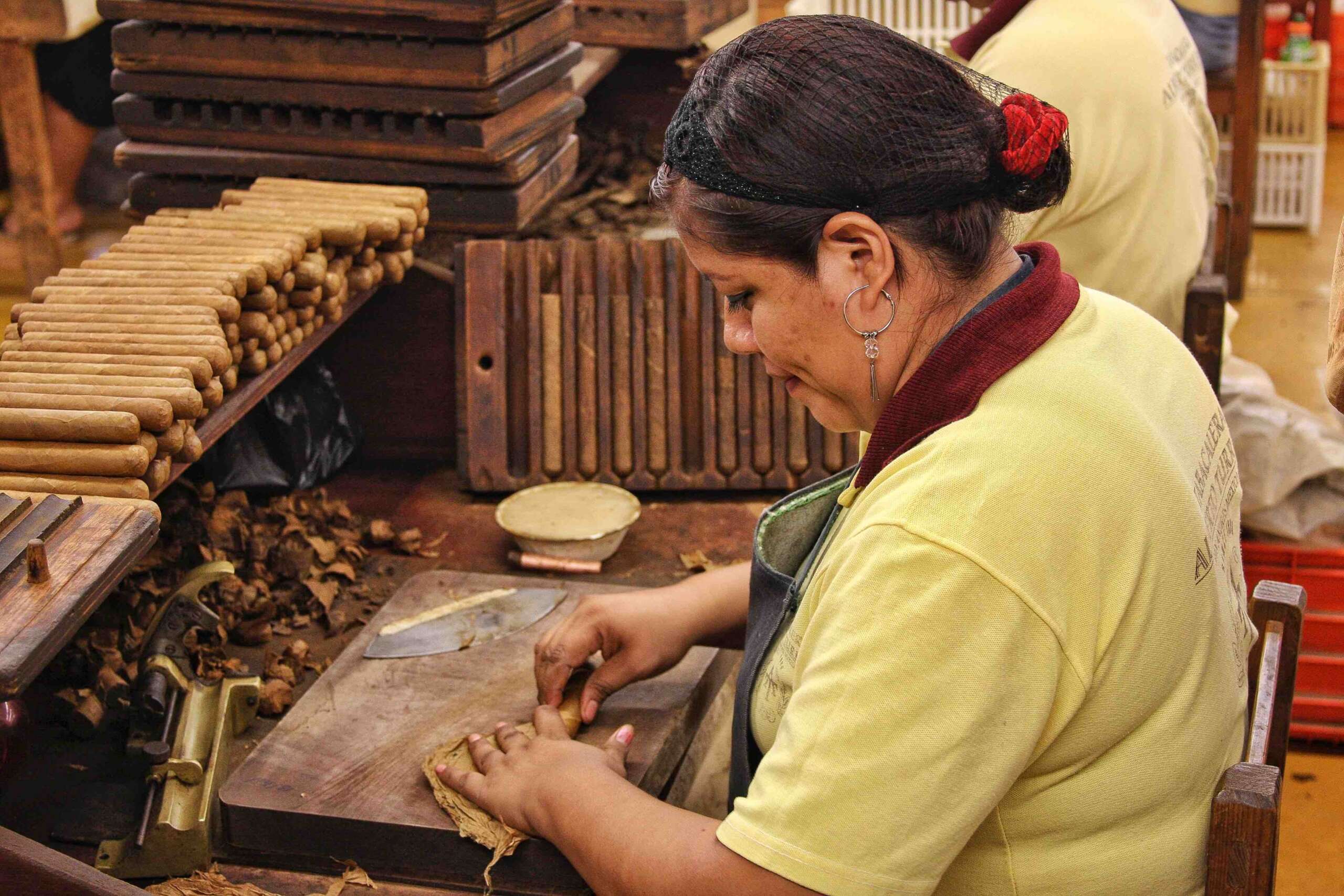
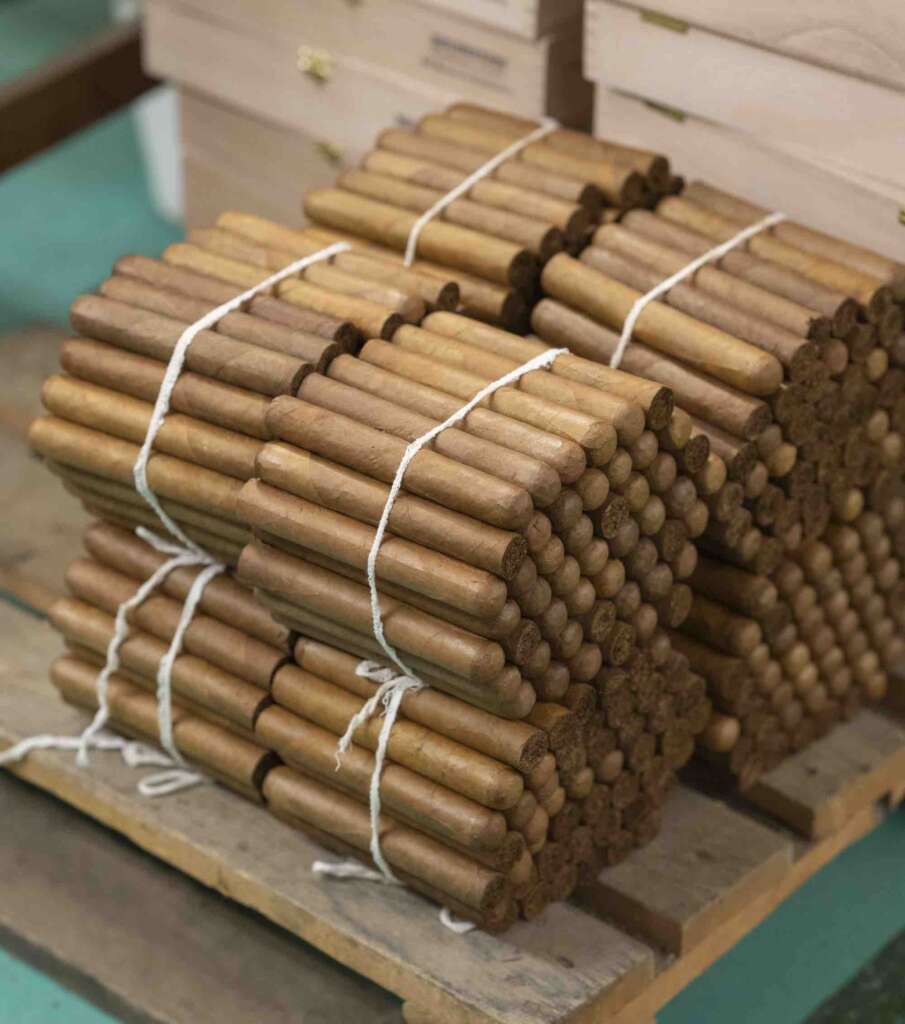
PACKAGING
We attach great importance to the presentation of our cigars by taking care of every detail. This process is performed with machines specifically designed for packaging that is both aesthetically pleasing and ensures that the product reaches the consumer in optimum conditions.
CIGAR FREEZING
The disinsectisation process does not use any chemical products, making it completely harmless and environmentally friendly. The already packed cigars for sale are frozen at -20°C for 120 hours before being sent to the finished product warehouse.
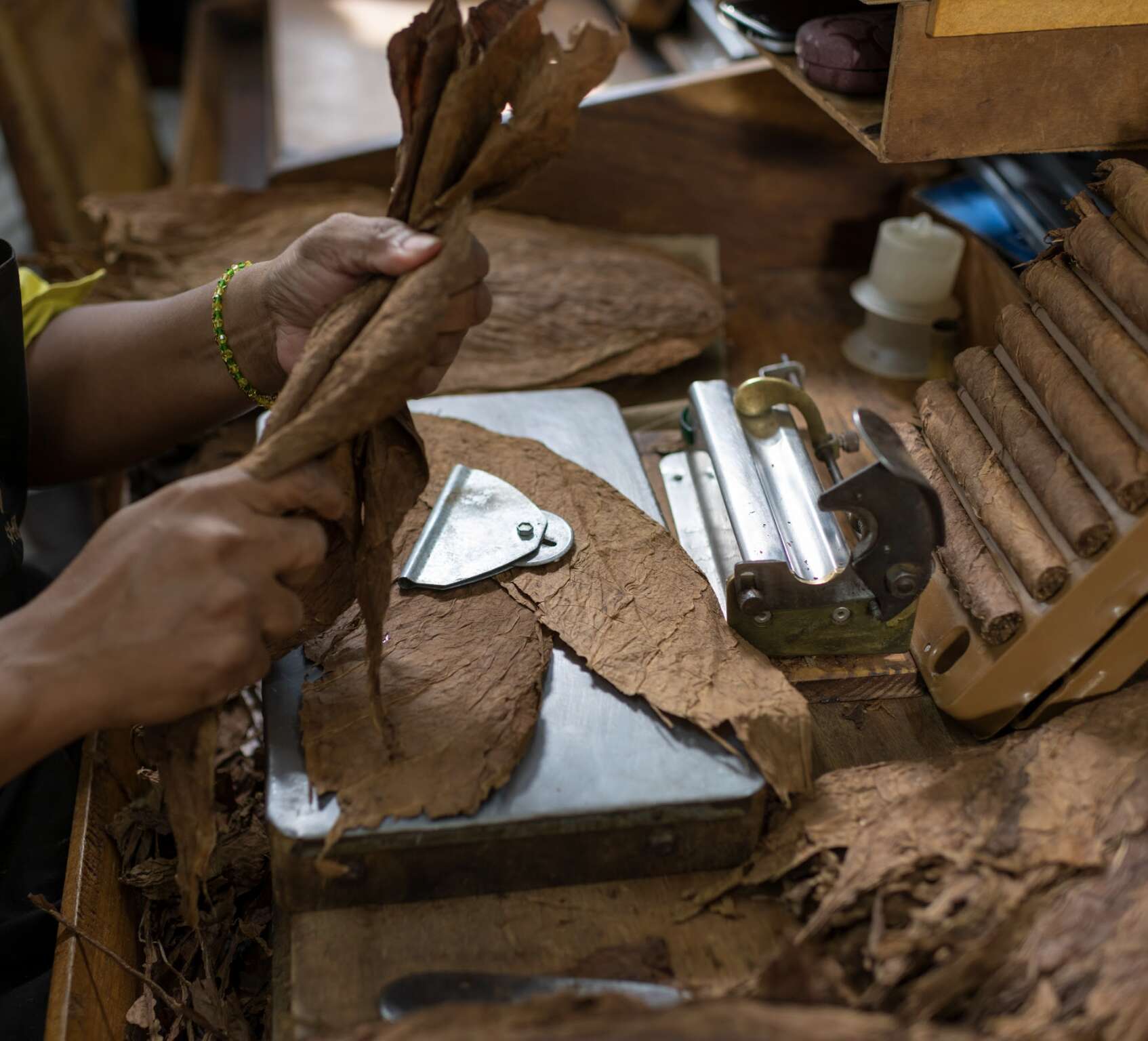
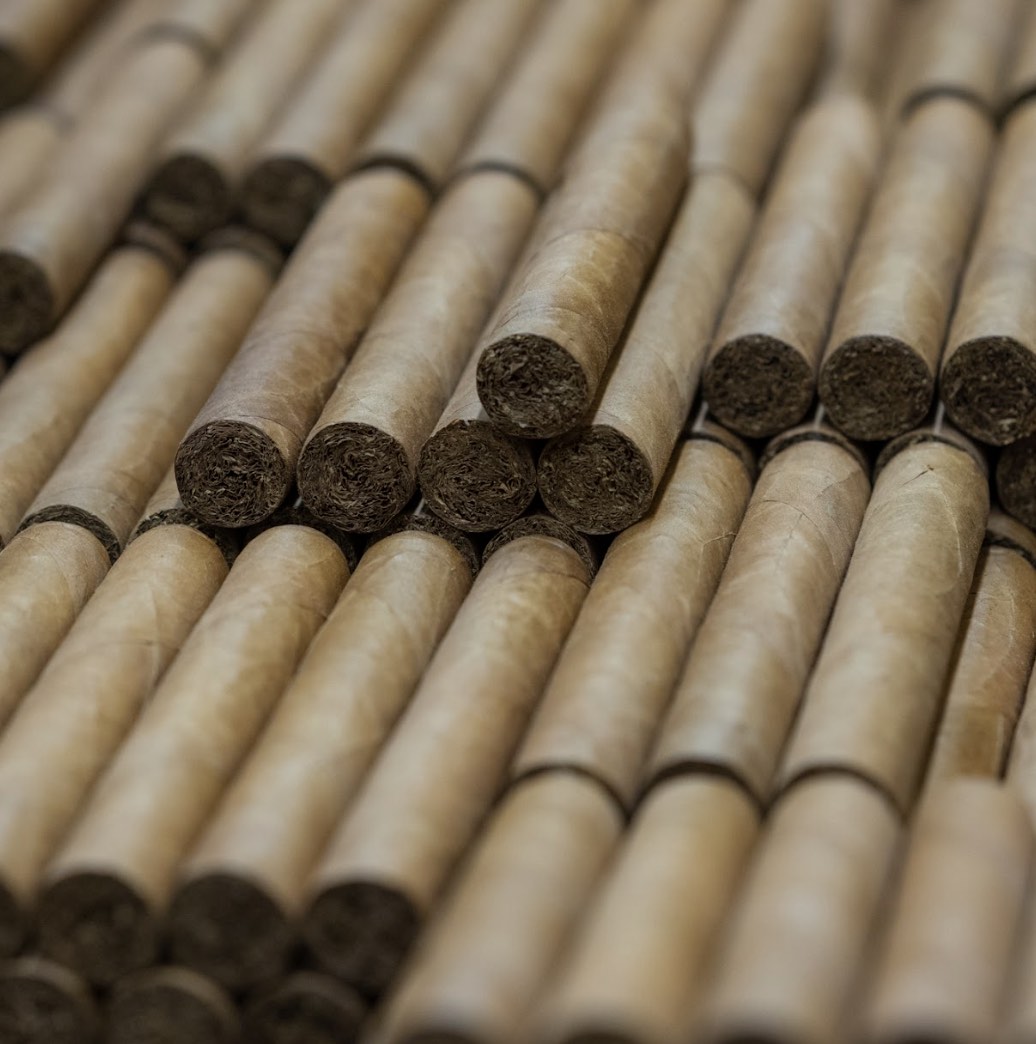
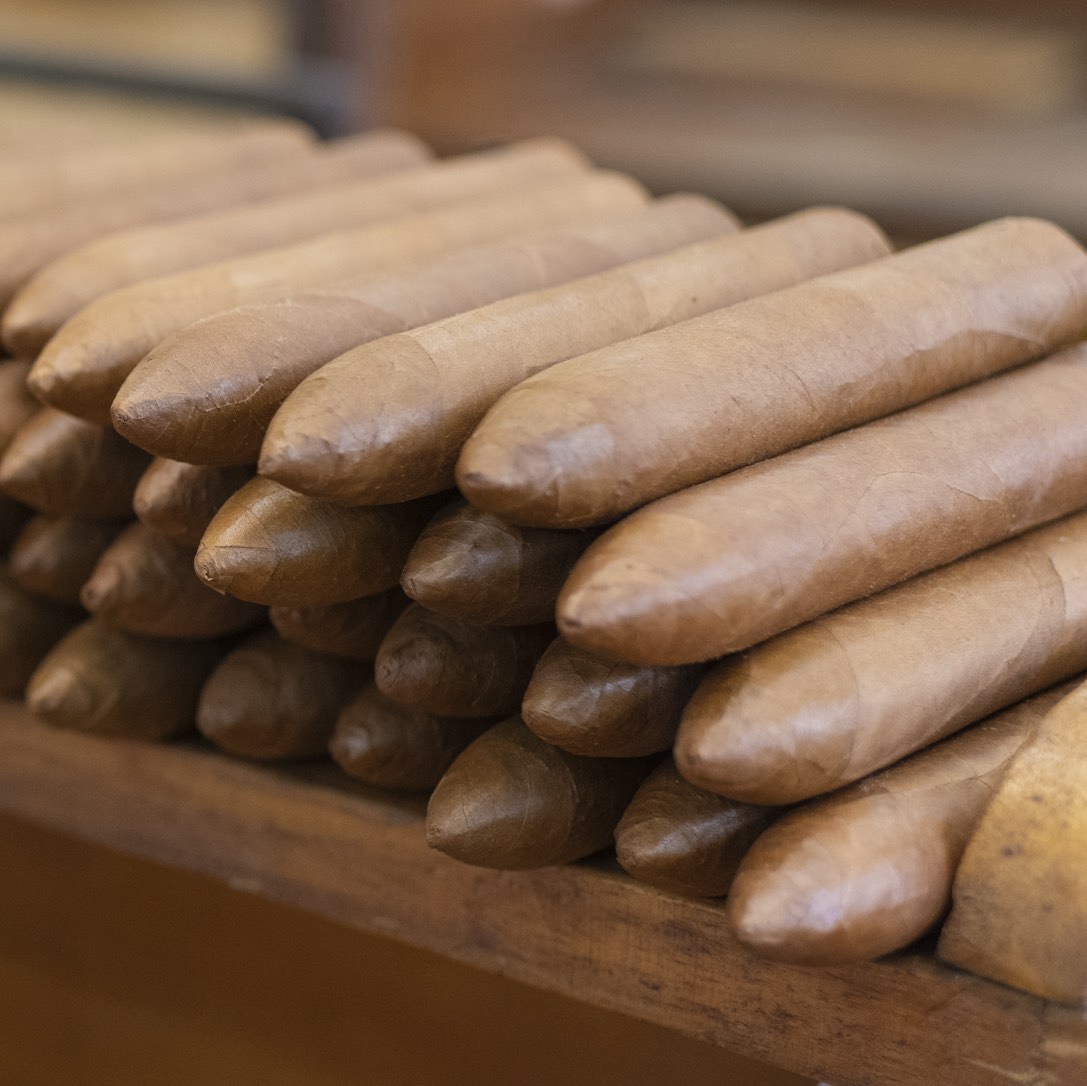
DELIVERY TO FINAL DESTINATION
El proceso finaliza con la exportación y las ventas en el mercado interno de divisas. La mayoría de las exportaciones se realizan vía marítima en contenedores refrigerados, a -20°C. El resto de las exportaciones son aéreas.
STRICT QUALITY CONTROL
All stages of our production process are supervised by a quality management specialist whose role is to ensure that all agreed specifications are met. This person is supported by a laboratory equipped with the latest technology, allowing every parameter to be checked with precision.
We have also implemented a quality management system based on the NC 9001:2001 standard in order to improve both our processes and our products.
